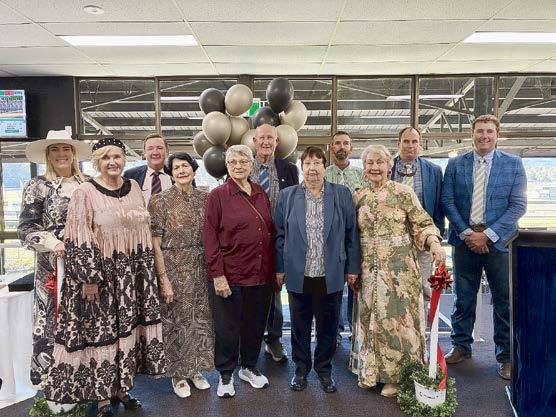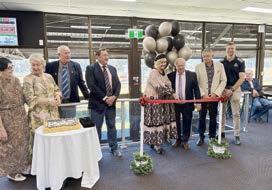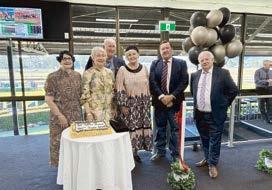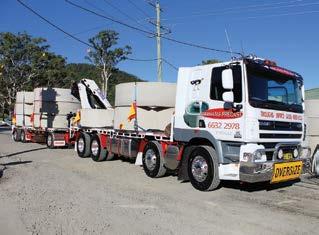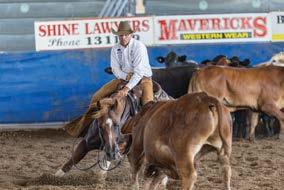




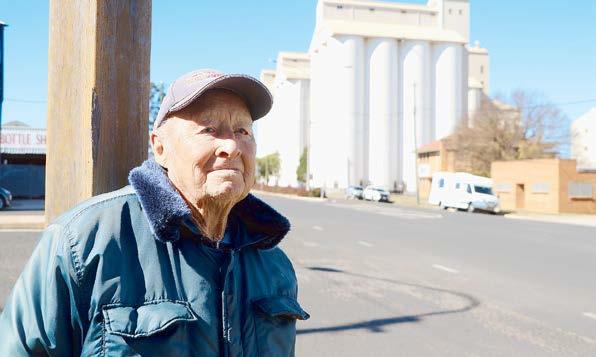







By Fiona Gowers
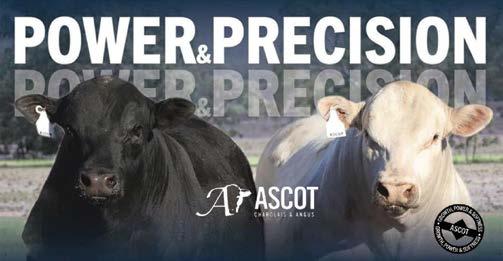
The scion of one of the South Burnett’s original peanut farming families said he harboured no resentment toward Bega Group for their role in the impending collapse of Kingaroy’s Peanut Company of Australia. Wilfred Young, 94, is the son of Henry Young - the man who, in 1928, built Queensland’s first mechanical peanut thresher in the South Burnett sparking a renaissancefortheindustry.
COVERAGE PAGES 4-5, 11
Kingaroy’s Wilfred Young remembers well the days on his father’s pioneering peanut farm. Decades later, he does not see the looming end of the Peanut Company of Australia as surprising. (Julian Lehnert: 490253)
Address: 154-156 Haly Street
Kingaroy 4610
Telephone: 07 4182 0450
Website: QueenslandFarmerToday.com.au
CONTACT US
Editorial:
Email: newsdesk@QueenslandFarmerToday.com.au
Advertising:
Email: advertising@QueenslandFarmerToday.com.au
Classifieds:
Phone: 07 4182 0450 or 1300 666 808
Email: sales@networkclassifieds.com.au
EDITORIAL
Fiona Gowers Editor
E: fiona.gowers@QueenslandFarmerToday.com.au
Breanna Lloyd Journalist
E: breanna.lloyd@QueenslandFarmerToday.com.au
ADVERTISING
Jane Lowe Sales & Marketing
E: jane.lowe@QueenslandFarmerToday.com.au
P: 0408 488 609
Jodie Williams Sales & Marketing
E: jodie.williams@WesternDownsToday.com.au
P: 0401 377 140
Jemma Wilson Sales & Marketing
E: jemma.wilson@BurnettToday.com.au
P: 07 4182 0458
Gayle Hopes Sales & Marketing
E: gayle.hopes@TodayNewsGroup.com.au Queensland
Publisher:
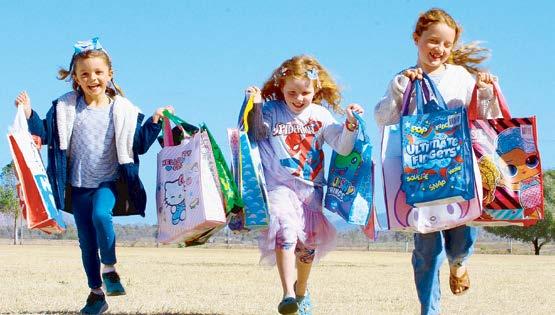
By Fiona Gowers
In the first permanent increase to the Show Society Grants Program since 2006, Queensland’s well-loved agricultural shows have received a major financial boost.
The Queensland Government has committed an extra $600,000 in funding to ensure its continued success and sustainability.
Announced last month, the additional funding includes $500,000 to support show societies across the state and an additional $100,000 to commission a landmark economic impact study.
David Wilson, president of Queensland Ag Shows, which represents 129 not-for-profit show societies statewide - run by more than 13,500 volunteers - welcomed the funding as a gamechanger for rural and regional communities.
“We are incredibly thankful to the Queensland Government for this significant funding commitment,” Mr Wilson said.
“The importance of agricultural shows to Queensland’s communities cannot be overstated. They provide a space for community engagement, foster local economies and support the agricultural sector.
“This funding will go a long way in helping shows maintain their viability and continue to provide these valuable services.”
The $500,000 allocated will assist show societies in managing operational and infrastructure costs, including insurance premiums, electricity, staffing, entertainment and compliance obligations, all of which have seen dramatic increases.
The additional $100,000 for an economic impact study will help quantify the true value of agricultural shows to Queensland’s economy and communities, guiding future funding and sustainability strategies.
Queensland Ag Shows has been a strong advocate for this funding, working closely with the Queensland Premier David Crisafulli and Minister for Volunteers Ann Leahy MP to highlight the vital role these not-for-profit events play across the state.
“Queensland Ag Shows has been working closely with the government to highlight the vital role that shows play, not only for agriculture but for the entire community,” Mr Wilson said.
“This funding will ensure we can continue to support shows across the state and prepare for future growth.”
Agricultural shows are a cornerstone of Queensland’s rural identity, offering educational experiences, fostering community pride and providing essential economic stimulation to local areas.
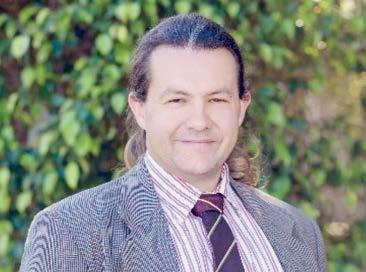
Spring bull sales are a critical event for Queensland cattle farmers - especially in southern and central regions - as they shape herd genetics and set the tone for the year ahead.
Queensland’s spring season aligns with improved pasture growth and cattle demand, driving higher turnout and stronger bidding.
It is recognised as the “cracking start” to the breeding calendar.
Many seedstock breeders schedule sales in August and September to allow bulls to settle in before the summer heat, enhancing animal adaptation and performance across tropical and temperate zones.
How farmers invest in new bulls often reflects their confidence in the season and market.
According to QRIDA, key considerations such as weather outlook and global beef demand reflect sale outcomes, with spring auctions a barometer for industry sentiment in regard to genetics, pricing and stocking levels.
As such, spring bull sales aren’t just auctions - they represent the future of Queensland’s cattle industry.
Queensland Farmer Today thanks ANC Full French Limousin, Ascot Angus and Charolais, Belmont Reds, Benjarra Limousin, Ben Nevis, Bulliac Angus, Coolabunia Classic, Cunnamulla Multi-Vendor Dorper and White Dorper Sale, Dorroughby Speckle Park, Fairview, Gold Crest Limousin, Jen-Daview Limousin and Angus, Kilkenny Charolais, Meldon Park Simmental, New Dimension Braford, Power of Red, Talbalba Herefords, Talgai Santa Gertrudis, Top Shelf Limousin, Wattle Grove and Woolooga Droughtmaster for their advertising support this month and wishes them well for their impending bull sales.
- Fiona Gowers

By Fiona Gowers
Floating solar panels on farm dams could revolutionise irrigated agriculture by alleviating evaporation and generating energy.
In a bid to solve some of the cotton industry’s biggest challenges - optimising water retention in the face of a hotter, drier climate and reducing carbon emissions through the generation of clean energy - the groundbreaking research could save Australian cotton growers water and money, boost productivity and set a crucial new industry environmental and sustainability standard.
It is a win-win, Australian-first project.
Nearly half of water storage volume is lost each year to evaporation and relocating just half of the current 16.6GW grounded solar panels to water storages could save 296GL of water a year, equivalent to more than 118,000 Olympic-sized swimming pools.
Simultaneously, it would generate vast quantities of energy.
The research project – spearheaded by Ag Econ with support from the Cotton Research and Development Corporation (CRDC) – will test the feasibility of installing floating solar photovoltaic (FPV) panels on irrigation storages to mitigate evaporation and create energy.
The $13 million project, called the ‘Novel Energy and Evaporative Storage Technologies for Irrigators’ (NEESTI) secured $6 million in funding under the federal government’s $5 billion Future Drought Fund’s Resilient Landscapes program.
Previous CRDC-supported research has found that managing evaporative losses from on-farm storages would “greatly improve“ cotton’s water productivity.
However, finding a practical solution is something the industry has been grappling with for decades.
The water saved via the FVPs could be used for additional crop production, domestic needs during droughts, water trading or water for the environment.
The project comes as agricultural supply chains face increasing pressure to lower emissions to meet national and sector-wide targets, which CRDC is prioritising through its Clever Cotton Strategic Plan and cotton’s industry-wide PLANET. PEOPLE. PADDOCK. Sustainability Framework.
Ag Econ principal climate analyst and economist Jon Welsh said the project addressed the critical issue of mitigating evaporation loss, improving drought resilience through improved water management and renewable energy generation that producers could actually offset or create income from, made possible through Virtual Energy Networks (VENs).
“This project investigates a practical, sensible and proven solution to store valuable water for longer, building resilience into an irrigated farming system that is then able to produce more food and fibre,” said Mr Welsh of Guyra on the NSW Northern Tablelands.
“Australia faces a critical trilemma of securing water, food and clean energy. Incorporating floating FPV on storage dams will help address all of those challenges simultaneously.“
In addition to Ag Econ and CRDC, the project also involves research partners the University of Southern Queensland and Macquarie University.

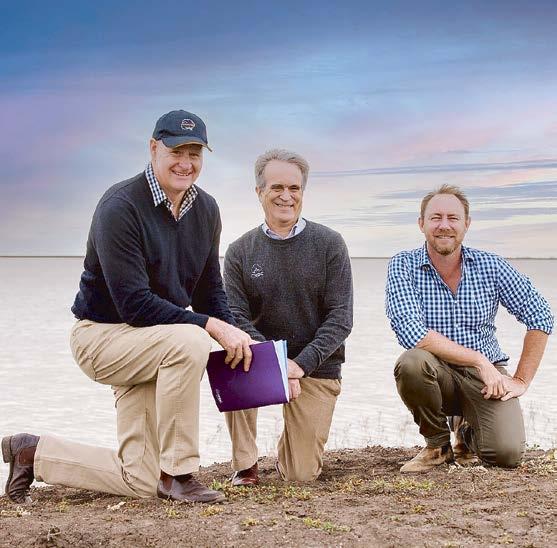
They will work across a number of agricultural industries outside of cotton, including grains, sugarcane, pecans and rice.
“We know FPV projects can work but there are serious challenges and a critical research gap remains – and that is how to develop a practical and cost-effective solution ready for farm rollout,“ Mr Welsh said.
“The project research will deliver technical, economic, policy and legal research to create a long-term and sustainable Australian FPV market for cotton and other irrigators.”

While the Australian cotton industry has improved its water use efficiency by almost 50pc since1997, the most significant loss of on-farm water is the evaporation from on-farm storages.
CRDC senior innovation broker Susan Maas of Emerald said this research built on the significant gains Australian cotton had already achieved.
“The Australian cotton industry has made huge gains in water use efficiency over the past 30 years, driven by research, development and extension,“ she said.
“Today, we are one of the most water-efficient

cotton-producing countries in the world.
“There are still improvements to be made, which is why we continue to invest in this crucial area of research. Mitigating evaporation losses is a huge unrealised opportunity for the industry and the environment.
“This project could be a game changer for our industry, local domestic storages and other irrigation industries by enhancing our resilience, productivity and sustainability in a changing climate.”
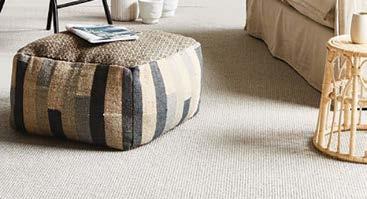

By Julian Lehnert
Bega Group’s chief executive officer Pete Findlay travelled to Kingaroy in early July to face the music regarding his employer’s decision to close down the Peanut Company of Australia, threatening the job security of around 200 South Burnett staff and farmers.
Mr Findlay spent Wednesday 9 and Thursday 10 July speaking to affected employees at Kingaroy, peanut growers in the region, and the leadership team of the South Burnett Regional Council to explain Bega’s reasons behind the shutdown of the area’s 101-year-old peanut company over the coming 18 months.
Bega Group’s CEO expressed his remorse for the looming end of PCA.
“We’re incredibly disappointed and really sad at the news. It’s a decision that we didn’t take lightly,“ Mr Findlay said.
“We’re sorry.“
WHY PCA HAD TO GO
Mr Findlay cited the long-standing tenuous financial situation of the Peanut Company of Australia as the main reason for his employer’s announcement to pull out of the venture, with the Kingaroybased peanut processor reportedly incurring multi million-dollar losses in each of the eight years it was under Bega’s ownership.
He explained that even the proceeds of Bega’s reported $30.5 million profit in 2024 would not be enough to ’right the ship’ that is PCA.
“We are an Australian food- and agri-business,“ Mr Findlay said.
“We’re really proud of that fact and we want to stay Australian-owned - which means we need to stay financially viable and strong.
“$30 million sounds like a significant profit, but we’ve got 18 sites and we need to stay globally competitive.“
Bega Group’s CEO said that the growing influx of imported peanuts to the Australian market in recent years had further increased the difficulty of running the Kingaroy operations at a sustainable level.
“In 2020, pre-bad drought, production dropped to 8,000 tonnes - unfortunately that opened up the market to imports,“ Mr Findlay explained.
“People started buying the imports - at a cheaperprice-andrealisedthequalitywasactuallyokay.
“We then stepped up payments to farmers and we pre-paid a large sum of money for the crop.
“Initially that worked - we got up to 25,000 tonnes through the plant at one stage - but we couldn’t get a lot of efficiencies out of that.
“We’re now also competing against this imported product that’s a fair bit cheaper. So, to sell peanuts at the cost against imported product, and try to buy them at a price that was viable for farmers against alternative crops, we got squeezed in the middle.
“That’s why the losses have really tallied up,“ Mr Findlay said.
“We compete here in Australia against import-

Bega Group’s chief executive officer, Pete Findlay, said insurmountable market pressures had forced the closure of the Peanut Company of Australia. (Julian Lehnert: 490134)
ed product (...) and we’re trying to compete overseas as hard as we can. What it means is we need to make really tough decisions sometimes on how we invest our money in order to make sure this business has a long-term, sustainable future.
“That sounds callous, and I know that that’s hard to accept, but this business was losing between $5 million to $10 million a year. It’s lost close to that amount for the last seven years that we’ve owned it, so that’s a fair investment.“
According to Mr Findlay, Bega Group invested a significant sum of money into its Kingaroy operations since purchasing PCA in 2017.
“We’ve spent about $15 million on this site trying to bring it up to speed - but we have just been unable to make this work,“ he said.
“If you add up the maths, that’s tens and tens and tens of millions of dollars that we’ve put into this site trying to make it work for the Australian food industry.
“We’re a proud agri-business but we just couldn’t continue to incur that, otherwise we’d have to weaken our other sites and operations,“ Bega Group’s CEO said.
When asked how PCA’s staff reacted to their employer’s impending closure, Mr Findlay said many workers were not surprised.
“I think a lot of people realised that this business has been on the edge probably for a couple of decades,“ he said.
“So, in a lot of areas there actually wasn’t shock, just disappointment.“
NEXT STEPS FOR EMPLOYEES
After breaking the news to PCA’s 142 employees and around 60 peanut growers on 9 July, Bega Group’s leadership team announced a sweeping support scheme in an effort to find as many of the Kingaroy site’s staff other work - or, failing that, ease their exit from the company.
“As of early next week we’ll be doing one-on-
one meets with every employee; we’ll be going through what it [the closure] means for them, we’ll talk about timings, redundancy payments,“ Mr Findlay said.
“During that process we’ll also provide financial advice.
“We’ve also got in place welfare services: we’ve got a counsellor on site full-time, and we’ve got a corporate application people can make to get support.
“That support will go to them [the workers], their families and growers. People’s mental state is obviously really important to us.
“We then start transition services; everyone will be provided with help to write CVs [and] look for jobs,“ he added.
To further enable PCA staff to find new work, Bega Group has pledged to partner with the South Burnett Regional Council to host a series of ’job fairs’ or expos in the Kingaroy area, with the first tentatively earmarked for late October 2025.
On top of their potential redundancy payment as well as other mandated benefits, departing PCA staff will also receive a one-off payment of $3,000 from Bega Group for the purposes of ’re-skilling’, with Mr Findlay explaining workers could use the money to obtain new qualifications or prepare for their next job.
“Those welfare services will be available to employees until they complete their employment with Bega, and the same goes for farmers and growers,“ Bega Group’s CEO said.
If critical employees of PCA find new work ahead of the company’s shut-down in 18 months, Bega Group has pledged to review its operations at Kingaroy to account for the loss in staff.
“We’ll look around how we do that, how we incentivise people to go or to stay based on those timings,“ Mr Findlay said.
“Ultimately, if people find another job we want them to be able to take it.
“It’ll be a tough 18 months but we’re keen that we get everyone through it as well as can be.
“We really want to assist [employees] in getting through that both mentally and physically. We want everyone to be safe and look after each other.
“Our company is 126 years old; it’s born in the country, in a community like this. We take that pretty seriously,“ Mr Findlay said.
“We think we’re a champion of the Australian food- and agri-sector, which is why this hurts. We’re not pulling the rug out [from under employees] - that’s not our style.“
CAN PCA BE RESCUED?
Bega Group announced in June 2024 it had engaged corporate advisors to undertake a ’strategic review’ of the Peanut Company of Australia. At the same time, PCA’s parent company began to solicit expressions of interests from third parties looking to purchase the peanut processing operation.
When asked about Bega Group’s efforts to find a prospective buyer for PCA in the 12-month leadup to Wednesday’s closure announcement, Mr Findlay said his company spoke to several inter-
ested businesses - but was never able to close out a deal.
“We’ve spoken to a few parties, and they’ve either looked at the numbers and couldn’t make it work, or looked at the numbers and didn’t come up with a sustainable solution,“ Mr Findlay said.
“We’ve pretty much said we’ll do anything to make this go on, and we still haven’t been able to find someone.“
With its 9 July announcement, Bega Group are now hoping to drum up renewed interest among potential buyers - saying that, this time, they are open to a wider range of offers.
“We’re very open to different scenarios,“ Mr Findlay said.
“As we exit this, we are not trying to recoup any of our money. We are happy to come up with a solution that will keep this going, but (...) it’s actually hard to find someone who might be able to take it on and do it better than us.
“Could it work in the future? Could a smaller amount of peanuts work through a reformed site structure? Maybe - but we’re not in a place to do that,“ he said.
THE FUTURE OF PEANUTS
However, if no buyers step up, Bega Group will follow through with decommissioning its Kingaroy peanut processing facilities.
“We will close the site,“ Mr Findlay confirmed.
“At this stage we’d have to work through what that physically looks like.“
Bega’s CEO floated the idea of selling PCA’s machinery and plant at Kingaroy on to another peanut processor should they be interested.
“We’d love it [the equipment at Kingaroy] to be used for the industry in some way or another, but we’re not looking to recoup our losses with the assets,“ Mr Findlay said.
“So, we’ll be looking to get those assets into the best hands possible for the community.“
When asked about the heritage-listed Kingaroy Peanut Silos, Bega’s CEO confirmed the iconic structure would not be dismantled.
Mr Findlay said Bega Group was talking to the South Burnett Regional Council about a future use for the silos.
Bega will continue to manufacture its offerings of peanut butter products even after exiting the South Burnett.
“We will still try and source Australian nuts,“ Bega’s CEO said.
“We use a combination of Australian and imported nuts in our product; some of our products are [made of] wholly Australian nuts. We’ll still source those from the existing processors.“
Even should Bega and PCA cease to be a presence in Kingaroy, another entity appears poised to keep the South Burnett’s remaining peanut growers in their line of work.
“There’s another processor just down the road [in Kingaroy],“ Mr Findlay said.
“We’ll work with them around the transition for growers.“
By Julian Lehnert
The scion of one of the South Burnett’s original peanut farming families said he harboured no resentment toward Bega Group for their role in the impending collapse of Kingaroy’s Peanut Company of Australia.
Wilfred Young, 94, is the son of Henry Young - the man who, in 1928, built Queensland’s first mechanical peanut thresher in the South Burnett sparking a renaissance for the industry.
The Young family was among the first to grow peanuts in the region, planting their first crop in 1919 at Memerambi. At harvest-time the following year, the Youngs were one of only two peanut growers in the South Burnett; just four years later, 100 peanut farmers called the region home.
‘Wilf’ began working on his father’s farm at age 14, being the youngest of Henry’s three children next to his sisters Una and Daphne.
Over the next nearly 30 years as a peanut farmer, Mr Young saw the industry change rapidly from growers breaking their backs pulling their crop out and sorting it by hand on stooks to the discovery of mechanical harvesting and sun-drying. He also witnessed the heyday of the Peanut Marketing Board, later to be renamed as the Peanut Company of Australia.
Mr Young explained that, in the early days of peanut farming in the South Burnett, prospective buyers would travel up from Sydney to deal with growers directly.
Predictably, he said, the agents would only offer ‘peanuts’ for the prized crop - as little as a half-penny a pound - immediately threatening the burgeoning industry as farmers began to view the job of growing peanuts as financially unsustainable. When a delegation of South Burnett farmers appeared before the then Minister for Agriculture and Stock soon after to voice their concerns, the government stepped in. Alongside an embargo on imported peanuts the Peanut Marketing Board was born in 1924 - essentially making Kingaroy’s crop the only game in town.
Since those days, much has changed according to Mr Young. Bega bought the Peanut Company of Australia - which had succeeded the Peanut Marketing Board - in 2017, but was never able to catch up to the many tens of thousands of tonnes the industry used to produce decades prior.
As a result, the Kingaroy local and long-time peanut farmer does not see the looming collapse of the Peanut Company of Australia as unusual.
“It’s very saddening, but it doesn’t surprise
me,” Mr Young said.
“I feel sorry for Bega, because they couldn’t have come in at a worse time.
“I’ll never forget the comment Bega made when they first came to town,” Mr Young recounted.
“They said ‘we’re going to encourage the farmers to grow more peanuts’ and offered them another $100 a tonne.
“I responded ‘encourage them to grow more peanuts? How are you going to make it rain?’
“It’s not down to the lack of worth for the farmers to grow peanuts, it’s simply the change in the weather patterns. We just haven’t had the rain to plant more.
“In the first 60 years of the peanut industry, there was never a crop failure,” Mr Young claimed.
“Other crops like corn or sorghum failed - and that’s why peanuts were so important. Even in a bad year you got enough peanuts back from your crop to at least pay your expenses.
“Now, the weather’s changed so much you can’t rely on it anymore.”
Mr Young recounted that, during the centenary of the South Burnett’s first peanut harvest in 2020, the region produced little to no crop
owing to a lack of rainfall that year - a story corroborated by Bega’s chief executive Pete Findlay, who said that after a heavy drought in the early 2020’s the pressure of imported peanuts became too much for PCA to bear.
When he was asked to give a statement on the South Burnett’s centenary of peanut farming back in 2020, Mr Young closed by issuing a declaration of hope for the coming 100 years.
His statement appears especially poignant as the region’s peanut-farming industry encounters its next major challenge.
“In my farming years, I depended on ‘next year’ for salvation - and I believe it’s part of a farmer’s nature to maintain that hope,” he said.
“[That’s] an attitude I pray will never be lost, for if the men and women of the land lose hope Australia will be lost.
“I believe the young people of today will maintain the spirit of the pioneers who braved so much and gave so much to leave us with what we have today,” Mr Young said.
“So, I appeal to our young farmers to carry on as your ancestors did, to find inventive answers and future-proof solutions to the problems you face and overcome them as they did.”
By Julian Lehnert
After 101 years in business Kingaroy’s peanut processing industry will soon be no more, with food producer Bega Group announcing on 9 July it will close down the Peanut Company of Australia over the coming 18 months.
Bega Group announced the shut-down just over a year after it employed corporate advisors to undertake a ’strategic review’ of the company.
A spokesperson for Bega Group confirmed approximately 142 employees will lose their jobs once PCA’s facilities at Kingaroy close. Around 60 South Burnett peanut growers will also be affected by the looming closure.
REGION’S PEANUT HISTORY
The Peanut Company of Australia can trace its beginnings back to Kingaroy, where in 1924 growers formed the Peanut Marketing Board.
In 1938, the Board began construction on the Kingaroy peanut silos, completing them in 1951; the Queensland Heritage Council added the iconic structure to the Queensland Heritage Register in 2010.
Bega Group, then known as Bega Cheese Limited, bought PCA - including its Kingaroy facility - in 2017 to broaden its food production portfolio.
The Peanut Company of Australia currently processes approximately 19,000 tonnes of peanuts at its facilities, including at Tolga in Far North Queensland.
In its statement on the impending closure of PCA, Bega Group claimed the company had been “under sustained financial pressure“ for several years prior to its sale; PCA reported a $1.442 million deficit in its 2017 annual report, following on from a surplus of just $834,000 the previous year.
Bega Group has gone on to claim that PCA’s operating losses have since grown to between $5 million and $10 million.
PCA’s parent company, meanwhile, reported a profit of $30.5 million in the 2024 financial year, according to its annual report.

around 140 people and
will
growers
On 6 June 2024, Bega Group engaged Melbournebased corporate advisory firm Kidder Williams to undertake a 12-month strategic review of PCA, with chief executive officer Peter Findlay citing a need to “optimise [Bega’s] core business“ and “evaluat[e] options for non-core assets.“
The Australia Business Review, a now-defunct online publication, cited Kidder Williams founder David Williams as saying that disposing of PCA’s Kingaroy facilities would be “the most likely outcome“ of the strategic review.
A new company could then partner with Bega Group to keep up production of its peanut butter brand.
“It [the sale of PCA] could be a very interesting opportunity for a food manufacturer to supply one of Australia’s premier brands, Bega’s peanut butter, as well as other food manufacturers,“ Mr Williams told Australia Business Review.
In its 9 July announcement, Bega Group justified the shut-down of PCA as the result of its failure to make its peanut processing operations financially sustainable.
“Despite ongoing investments made by Bega Group into PCA’s operations, including significant upgrades to site safety and initiatives aimed at supporting local growers to boost production, Bega Group has not been able to establish a sustainable business model,“ Bega Group stated.
“Continued financial losses and industry challenges led to the need for the review and ultimately the conclusion that the business would be better served by a change to more local and focussed ownership or in the absence of that being achieved, unfortunately a closure.“
Bega Group’s CEO admitted the company had been unable to find a buyer for PCA that could lead the business as well as its 142 employees and 60 growers to prosperity.
Mr Findlay said PCA’s employees will receive offers of redundancy, support ahead of the business’s closure, as well as chances to find other work with Bega Group. An unnamed number of employees, he added, will be able to continue their work until the day PCA closes.
South Burnett mayor Kathy Duff called Bega Group’s announcement a “massive blow to Kingaroy,“ saying the impending shutdown of PCA could have wide-reaching consequences for the region.
“From council’s point of view, we’re incredibly concerned for the employees and growers that all rely on Bega and that facility [at Kingaroy],“ she said. “[Losing] 130 to 140 jobs, plus the 60 or so growers that depend on PCA as their outlet, is a massive blow to Kingaroy and for our region,“ she added.
Mayor Duff spoke to Bega Group’s Adam McNamara, executive general manager for ’Growth Channels and Customer Supply Chain’ on Wednesday afternoon regarding his company’s announcement.
She said that Bega Group were disappointed to force the shut-down of PCA - but that the company hopes a prospective buyer may yet emerge over the coming 18 months to rescue the venture.
“They’re hoping that this announcement brings other offers to the table,“ Mayor Duff said.
“Bega are hoping to bring it [the sale of PCA] to a head,“ she added.
Jobs help pledge, page 11.
2.9m / 9.5 under hammer

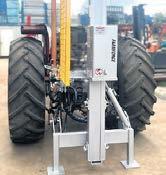
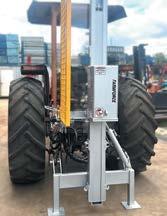
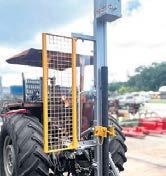
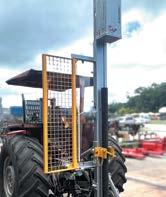
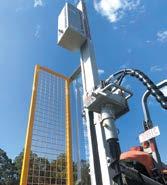
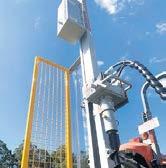
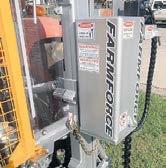
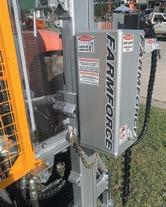



By Maddison Richards
In the world of cutting, Matthew Barbour is a cut above the rest.
A local of Kumbia and an employee of Kewpie Stockfeeds, has been seriously riding since he was 13 or 14-years-old, and has now become a certified member of the Professional Cutting Horse Trainers Association of Australia, and champion in the $15,000 Novice Category and placed third in the Open Category on his horse Sweet Stevie at the Roma Cutting Show on 5-6 July.
Exposed to cutting at 16-17 years old through his uncle Ian and aunty Megan, training their own cutting horses, his career into cutting began.
Mr Barbour spent three years at the Ag College at Gatton, which was followed by a further three years in the Northern Territory and Kimberley where he worked on stations.
In 2005, Mr Barbour began working for a professional cutting trainer, Ian Francis, a family friend of Paul and Delvene Woltmann, Kewpie Owners.
He has also spent two years in the USA, working for a professional cutting trainer from 20072009.
Upon returning home, Mr Barbour, while working on properly setting up to train cutting horses, did contract horse breaking and weaner tailing.
In 2012, Mr Barbour travelled to Tamworth to compete in the Tamworth Futurity with the first horse he had trained from start to finish, and has competed there every year since.
“The thing I love about cutting is the feeling of the horse working underneath you to control the cow,” Mr Barbour said, “their ability to anticipate what a cow is going to do and put themselves in a position to stop it from returning to the herd.”
Simon Neal, Business and Marketing Analyst for Kewpie Stockfeeds, said “the Kewpie Group believes in and demonstrates a firm commitment to locals supporting locals.”
Through this concept, Kewpie Stockfeeds have endorsed, supported and aided locals who excel in their field.
Mr Barbour’s growing success in the sport of the National Cutting Horse Association has been recognised and Kewpie extended the opportunity for Mr Barbour to become a sponsored rider.
“This sponsorship reflects a mutually beneficial partnership providing Matthew and Kewpie the chance to expand their reach and connect with a wider audience,” Mr Neal said.
The sponsorships were conceived by Kewpie’s owners and directors, Paul and Delvene Woltmann, both of whom actively compete in cutting events and own/breed cutting
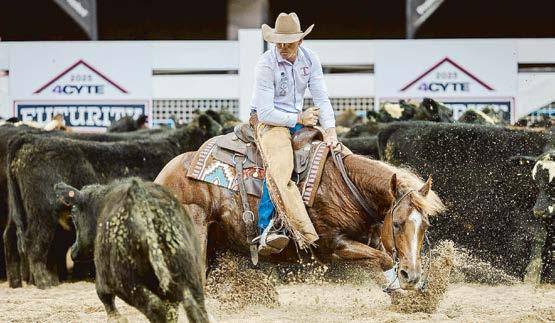
horses for competition.
“It’s great to have the Kewpie sponsorship as it helps with the grain bills as well as other great horse and cattle health products,” Mr Barbour said, “as well as fencing products for electrical fencing used when travelling to house the horses at shows safely.”
Mr Barbour said he has also purchased a lot of steel through Kewpie to build a gooseneck.
“Since being on team Kewpie, we have enjoyed a fair bit of success,” Mr Barour said. “We have a mare, Sweet Stevie, that has won the open cuttings at Dalby, Condamine and Goondiwindi, and also just recently was the reserve champion in the limited open classic at Tamworth.”
Sweet Stevie also finished equal seventh in the open classic final.
Mr Barbour would like to thank Paul, Delvene and the team at Kewpie for their support.
“I’d like to thank my wife, Sheannae, and family for all their support and hard work to keep the business going, and all the clients that entrust their horses with us.”
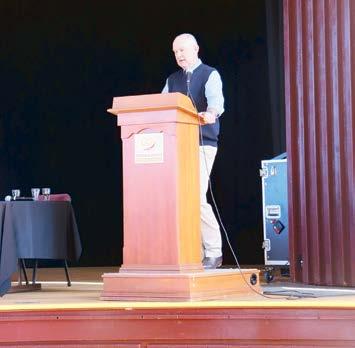
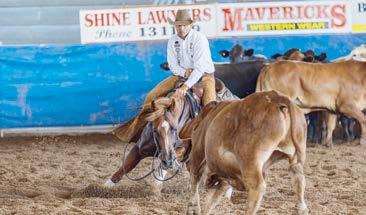
By Maddison Richards
Primary producers from across the South Burnett and beyond convened to Kingaroy for the LNP Primary Industry Policy forum.
On Saturday, 12 July, the Kingaroy Town Hall welcomed 90 people from various agricultural services through its doors.
The forum aimed to engage the broader community with party members to identify key policy areas in relation to the Primary Industries Department.
It also created a unique opportunity for the LNP’s Primary Industries Policy Committee and the Minister to have a two way discussion on ideas that will advance primary production and help achieve the Minister’s directive from the Premier for farm gate production to lift to $30 billion by 2030.
Present in the audience were people who travelled from as far as Quilpie, Taroom, Millmerran, Jandowae, Oakey and from across the South Burnett.
Jarred Seiler from Queensland Livestock and Rural Transporters Association attended, as well as representatives from BIEDO and various AgForce and QFF members.
This is the second Policy Forum organised by the LNP Primary Industry Policy Committee. The first was held in Toowoomba, where a former Queensland Chief Veterinary Officer spoke about biosecurity matters.
It is the hope that by holding these forums, it gets the point across that the government
and policy committee want to listen to grassroots farmers and other entities that make Queensland agriculture what it is.
Hon. Tony Perrett MP, Minister for Primary Industries and Member for Gympie spoke first, breaking down the many pressures farmers and agricultural businesses face and the challenges of production.
He touched on how the aftermath of the flooding was affecting production and how it was critical to rebuild, referencing the exclusion fencing needed for sheep farming to protect against dogs, and how much work is still ahead.
The second session of the forum consisted of a panel discussion, where ideas were discussed, including the impact of the Trump tariffs on Queensland agriculture, the importance and future opportunities available for agriculture in schools, wild dog programs, growing forestry plantations to meet demand in the building sector, animal welfare regulations, access for heavy vehicles, the relationship between state forests/ national parks and their neighbouring properties, and the wider impacts of commodity based sustainability frameworks.
The local cattle tick issue was roundly discussed by local farmers with the minister.
Those on the ‘Future challenges and opportunities facing Queensland’s Livestock Industries’ panel included: Bryce Camm, Dr Jodi Courtice, Don Chandler, South Burnett Mayor Kathy Duff, Ross McInnes, Scott Kompo-Harms and Stephen Tully.
Two young Texan ranchers whose families are deeply entwined with the birthplace of Santa Gertrudis cattle have made a visit to the region in Queensland where it all began for the breed Down Under.
King Kleberg, 21 and Kolton Grigg, 20, from King Ranch, Texas are on a two-month study tour showcasing the best of Australia’s Santa cattle country.
On Friday, July 4 - US Independence Daythey stopped by Talgai Homestead, the home of NIOA Santa Gertrudis, on the Southern Downs.
King represents the next generation of the family synonymous with King Ranch – one of the most legendary ranches in the world which traces its history back to 1853, while Kolton’s father Heath Grigg runs the 825,000-acre operation.
The Allora-Warwick region has deep historical roots to the Santa Gertrudis breed in Australia.
It was where, in 1952, King Ranch set up its Australian headquarters at “Risdon” Warwick and where the first sale of a dozen imported American bulls was held on November 14 that year.
The story was so big at the time that it made the front page of the Courier-Mail newspaper the next day. The paper reported that 1200 people attended the auction with the top-priced bull fetching 1500 guineas to FG Schmidt of “Avondale”, Cunnamulla.
From that first bull sale, the breed – renowned for its resilience and adaptability in tough climates - has spread throughout Australia contributing significantly to the nation’s beef production.
While “Risdon” is no longer a Santa stud, the Allora-Warwick district has retained its historical links to the bloodline through NIOA Santa Gertrudis, Stud No. 2122, established by Rob and Eliza Nioa in 2014.
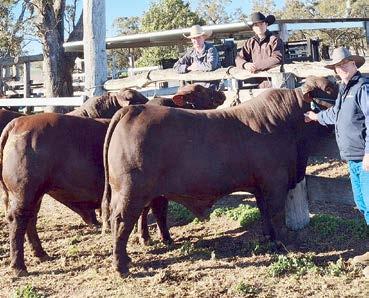
King, the great-great nephew of Robert Justus Kleberg Jr who ran King Ranch for almost 50 years until his death in 1974, said he was humbled to belong to the family line that pioneered the “cherry reds”.
“I’m very proud of the fact that my ancestors have had such a lasting impact on the breed and the cattle world itself,” he said.
“Growing up around Santa Gertrudis - that’s the main breed that I’ve known - I worked on the
ranch basically every summer in the cattle operation.
“It’s been really cool knowing the story (about the breed’s foundations), getting to see how passionate people here are about the breed... and knowing that my ancestors had a part in developing them here in Australia.”
However, the Texan duo’s visit is more about looking forward, than looking back.
Their two-month itinerary, organised by
Santa Gertrudis Australia, is part of a mission to delve into both commercial and stud operations. It will culminate with a visit to Ekka Beef Week in August – the biggest cattle competition in the Southern Hemisphere.
Kolton has been impressed with how local breeders are advancing genetics and hoped it would foster greater Australia-US collaboration.
“We’ve seen a lot of good genetics around here,” he said. “It would be interesting to see how we can communicate better and improve the genetics of Santa Gertrudis overall.
“It’s been a once-in-a-lifetime opportunity to get out and see different country, the land, how we do stuff similar to each other, how we do things differently, and how we can learn from each other.”
NIOA Santa Gertrudis General Manager Shannon Gardner said it was a pleasure to host the young ranchers.
“Santas are now one of Australia’s major beef breeds and it all began in this part of Queensland,” he said. “We were glad to welcome King and Kolton to share in their knowledge and for them to hear about our breeding practices.”
In recent years, NIOA has invested in some of the best sires and stud females in the business sourced from studs including Yarrawonga, Yulgilbar, Riverina, Bullamakinka, Goolagong, Glen Oaks, Talgai, Rosevale, Riverslea and Gyranda.
The current sire battery boasts Yarrawonga Spartacus – the Australian breed record-holder purchased by the stud in 2022 for $250,000 as well as the former Australian breed record-holder Riverina Roland Sanchez ($160,000).
The sons of Spartacus will be among the 91-lot catalogue for the NIOA RL Pastoral Sale at Talgai Homestead on Thursday, September 4.
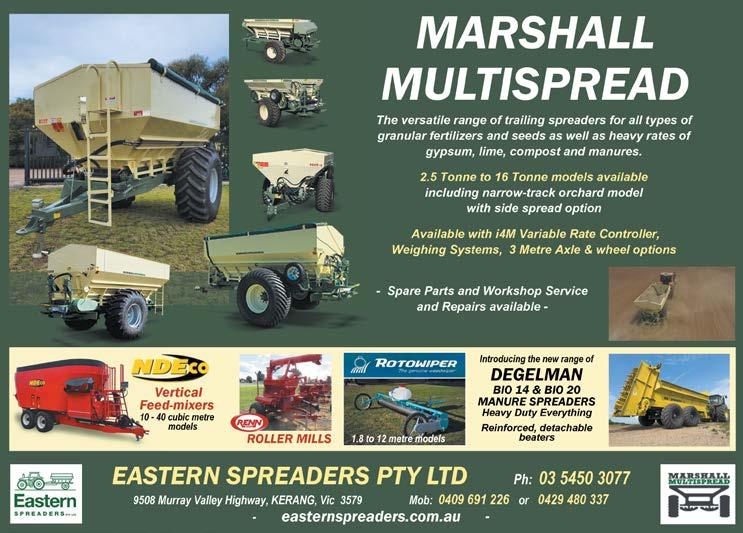
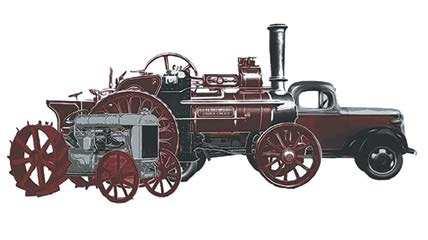

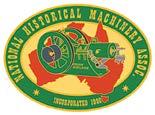
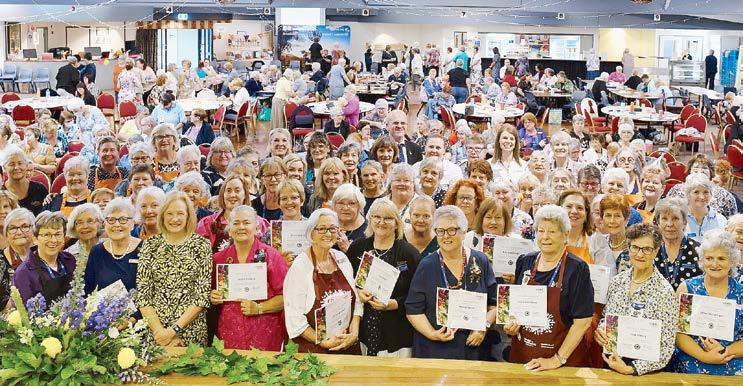
By Breanna Lloyd
In celebration of its century of service, the Emu Park branch of the Queensland Country Women’s Association (QCWA) held a two-week exhibition showcasing 100 years of supporting rural women and the community.
Held at the Emu Park Art Gallery, the exhibition, which opened on Wednesday, 16 July, featured historical displays outlining the organisation’s lengthy history, craft samples, old photographs, needlework, and Country Kitchens’ healthy eating initiatives.
President Patty Burgess said the exhibition celebrated the legacy of the QCWA while educating the public on the group’s wide-reaching impact.
“It’s all about empowering and inspiring women through friendship, education, connection and advocacy,” she said.
“What started as a way for isolated rural women to find companionship and support has grown into a statewide network of strong, committed women who work tirelessly to improve their communities.”
The Emu Park branch is one of many across Queensland that celebrated its 100th year since the QCWA was founded in 1923.
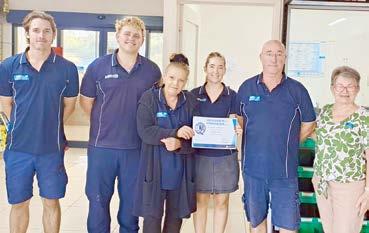
The local branch was established in October 1925 and held its first meeting in November of that year.
“We’ve seen a lot of change over the years, but our mission has always stayed the same,” Patty said.
In addition to the exhibition, the branch will host a number of events throughout the year to mark the
yacht race from Rosslyn
Bay to Emu Park, and a gala garden party in November to coincide with the date of their first official meeting.
Visitors to the exhibition can also learn about QCWA’s international program, which highlights a different country and product each year.
In 2024, it was Ontario, Canada and macadamia nuts.
Patty said the Emu Park QCWA has long played a hands-on role in community development.
“In the early days, the branch gifted a truck to the Livingstone Shire Council to help maintain the Emu Park–Rockhampton Road. They also built a rotunda at the beach in 1928, created a playground, and advocated for the white fog lines on roads,” she said.
“They’ve always been practical women getting things done.”
Today, the 40-member-strong branch continues to make a difference by knitting gloves for chemotherapy patients, creating birthing kits for women in remote Papua New Guinea villages, and packing school supplies for children in the Pacific Islands.
“We just want people to see what we do,” Patty said.
“We’re not just about scones, jam and cream, although we still do that too.”

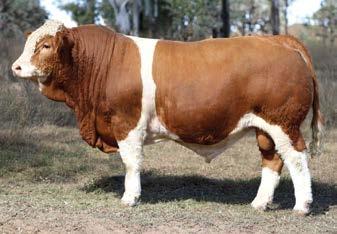

By Maddison Richards
It’s that time of the year again with Kingaroy BaconFest right around the corner.
The South Burnett town of Kingaroy is excited to host the famed annual bacon festival.
However, BaconFest 2025 is set to be different to previous years, with a change of schedule and location.
Memorial Park in Kingaroy is set to host this year’s BaconFest, across 15 and 16 August.
On Friday, 15 August, locals and visitors alike can expect to see food trucks and market stalls galore with the Bacon Street Feast and home grown artists providing live music from late afternoon well into the night, with entry from $10. Bringing a picnic chair or rug is encouraged.
A Farm to Gate bus tour on the Friday will be available for those looking to experience the agricultural atmosphere of the region. There are limited numbers, so booking ahead will be essential to secure your bus seat.
Saturday, 16 August, will see a new schedule from previous years.
The Big Bacon Breakfast will kick the day off from 7am to 9am with a $10 entry fee, with local artists performing and dance demonstrations scheduled.
The crowd favourite of bacon eating competitions will still hold centre stage, and the Smoke Off Awards will let the crowd know who can cook the best bacon dish, but many fan favourites such as the Beards of BaconFest will be taking a break this year.
There will still be plenty to see and do with a cooking demonstration tent with celebrity chef Alistair McLeod, and My Kitchen Rules Winner 2024, Simone Prest.
Chief Baconeer Rob Fitz-Herbert, or Fitzy as he’s known, is excited about the Youth Activity Area which will, for the first time in BaconFest history, see jumping castles.
Face painting, bacon ice-cream and numerous games and activities will also be present.
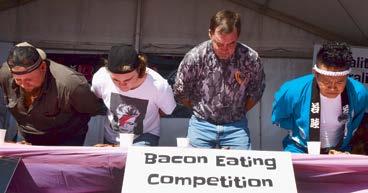
Roving entertainment will be present to keep the crowds entertained throughout the day.
The headline entertainment for BaconFest 2025 is none other than Troy Cassar-Daley, taking to the stage from 6.30pm.
Troy Cassar-Daley was crowned as the highest golden guitar winner at the Tamworth Country Music Festival 2024, and Number One ARIA Country Music Album of the Year.
Chief Baconeer Fitzy feels extremely privileged to have secured Troy Cassar-Daley for BaconFest 2025, with Mr Cassar-Daley’s team hand picking the support act to be volunteer co-ordinator Amber Goldsmith, who was chuffed at the opportunity.
Overall planning has been going well, with the committee stoked that SunPork is supporting the move to Memorial Park and the change to the schedule timeline, and pleased to have entertainment partner Westlink Petroleum on board as well.
The move to Memorial Park will allow everything to be centralised and easy to access.
“This year’s committee, we’re very conscious of engaging with the local community to make sure there are affordable options for our community,” Chief Baconeer Fitzy said, understanding the financial challenges within the community, and took that into account with pricing.
The shuttle bus will make a return this year, making trips around town.
Kingaroy Showgrounds has come on board to offer parking as well.
The general consensus in feedback was to HAVE MORE BACON, and many stalls will be coming onboard to provide niche bacon meals following the conclusion of the Big Bacon Breakfast.
The Chief Baconeer gave a shout out to South Burnett Regional Council and their Parks and Gardens Managers for supporting the move to Memorial Park and getting the grounds ready for the festival.
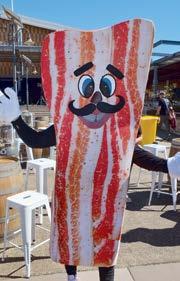
“Come and support your local festivals by your attendance, it assures the continuance of viable in the future,” Chief Baconeer Fitzy said. “Come and celebrate bacon with us.” Chief Baconeer Fitzy would like to implore everyone who is thinking of attending BaconFest 2025 to purchase tickets ahead of time, as there is a limited amount this year, and he doesn’t want people to arrive at the festival only to be turned away due to tickets being sold out.
• Tickets can be purchased at OzTik: tickets.oztix.com.au/outlet/event/5f7cbf5e-33cc-4012-



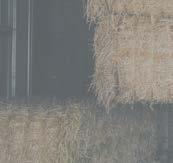








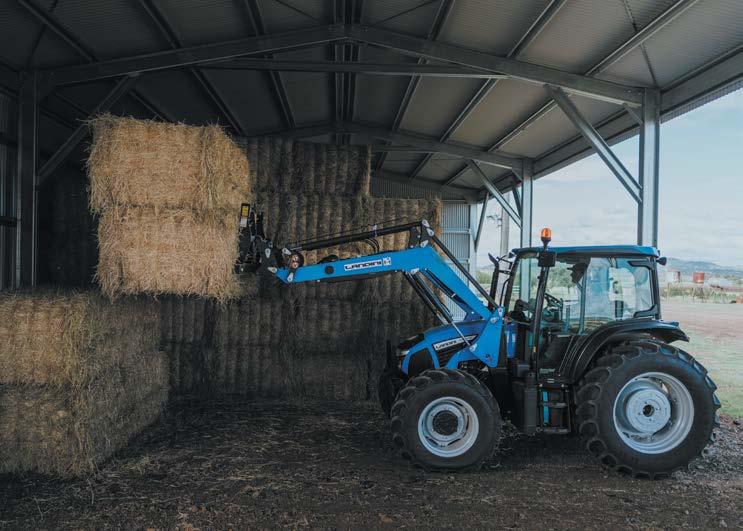
By Julian Lehnert
South Burnett mayor Kathy Duff said she was left “hopeful“ after a talk with Bega Group’s senior executives in early July, with the company making several promises regarding the impending closure of Kingaroy’s Peanut Company of Australia facility.
Cr Duff met with Bega Group chief executive officer Pete Findlay and general manager for growth and supply chains Adam McNamara on Thursday, 10 July, to discuss the company’s announcement it would close down its peanut operations in Kingaroy over the coming 18 months, made the day prior.
Bega Group has confirmed approximately 142 employees of the Kingaroy facility stand to lose their jobs as a result of the closure, with around 60 peanut growers in the South Burnett also affected.
The South Burnett’s mayor explained that, during Thursday morning’s meeting, Bega Group’s executives committed to working with council as well as the Kingaroy TAFE campus on hosting a ’job fair’ for affected employees of PCA.
“They [Bega] want to have a job expo, they want to have full pay-outs, all sorts of programs to support the employees,“ Cr Duff said.
“They’re also looking to get us [the South Burnett Regional Council] to support them in getting the workers other employment,“ she added.
TAFE Queensland’s General Manager of the South West Region, Kate Venables, confirmed Bega Group had been in touch to set up assistance programs for PCA’s departing workers.
“TAFE Queensland will work closely with Bega Group to support employees affected by the Kingaroy facility closure by offering tailored training programs, career counselling, and pathways into new employment opportunities,“ she said.
During their Thursday morning talk with the South Burnett’s mayor, Bega’s executives further justified their decision to close down the Kinga-
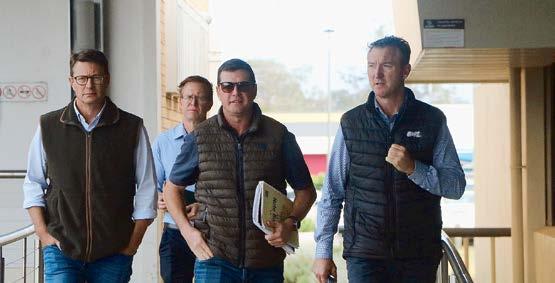
roy facility.
“They said that they cannot make ends meet and they had to call it - to do the right thing by the growers and by everybody, because there was no point in keeping to lose money when they knew that they had to eventually shut down,“ Cr Duff said.
She went on to confirm a statement by Bega’s Adam McNamara, made the day before, that PCA’s parent company was still hoping a prospective buyer will step up in the next 18 months to rescue the Kingaroy site.
“They decided to draw a line in the sand, make the announcement, and then hopefully get an offer,“ Cr Duff said.
“They’re open to any offer,“ she added - a sharp shift in rhetoric when compared to CEO Pete Findlay’s statement to the public on 9 July.
“Unfortunately, we’ve been unable to find a buyer that could sustain a long-term future for employees and growers,“ Mr Findlay said in Bega Group’s media release on the coming closure of PCA, implying the company potentially turned down one or several interested parties in the past.
Bega’s executives toured the South Burnett after their talk with Cr Duff on Thursday, speaking to affected employees as well as growers about the plan to close down the Kingaroy facilities.
The South Burnett’s mayor reported her talk with Bega Group’s top brass left her reassured compared to Wednesday’s “disappointing“ initial announcement.
“From what I have heard from them I am hopeful - and they’re also hopeful that something will come of the announcement,“ Ms Duff said.
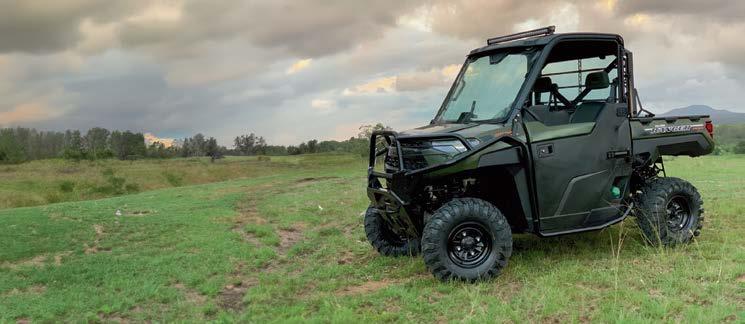
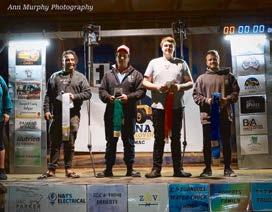
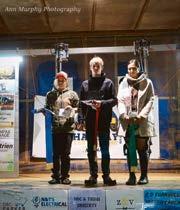
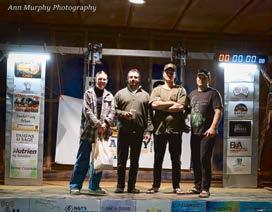
The Aramac Speed Shear made a triumphant return on Saturday, 21 June, drawing in a large crowd and delivering an action-packed night of competition and entertainment.
Held at the Aramac Showgrounds, the event marked its first appearance since 2014.
The response was overwhelming, with locals and visitors alike turning out in force to witness some of Australia’s top shearers compete for prizes and bragging rights.
Organisers say the successful return of the Aramac Speed Shear has firmly reestablished theeventasahighlightontheregionalcalendar, with aim for an annual event.
ARAMAC SPEED SHEARS 2025 RESULTS Novice
• 1st: Claudia Halverson 55.67
• 2nd: Bligh Palmer
• 3rd: Stoneigh-J Waihape Intermediate
• 1st: John Fitt
• 2nd: Evan Hannay
• 3rd: Will Jones
• 4th: Cully Stephens
Open
• 1st: Kevin Kinita
• 2nd: Michael Singleton
• 3rd: Jovan Taiki
• 4th: Michael Grotjahn
• 5th: TP Carsen
• 6th: Liam Harbottle
Trans – Tasman Winners - Aussies Liam Harbottle, Michael Singleton and Michael Grotjahn
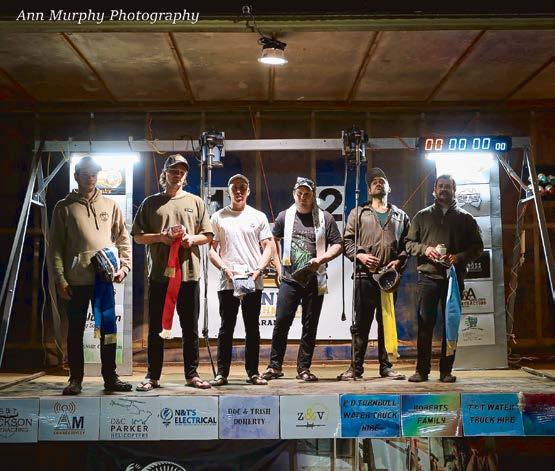
SATURDAY 30TH AUGUST 2025
Showgrounds - commencing at 11.00am
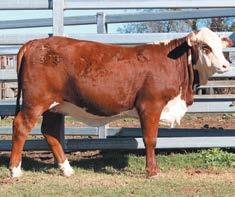
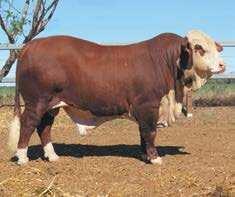

By Fiona Gowers
For 10 years, Mike Bradshaw has infused top-tier Red Angus genetics through his Droughtmastercross cow base.
The result? A trifecta of benefits.
Easier births
Red Angus genetics are renowned for calving ease, primarily due to lower birth weights.
Reputable studies show Red Angus bulls consistently produce calves with lighter birth weights and fewer calving difficulties when crossed over heavier breeds.
This advantage results in smoother calving seasons, reduced veterinary interventions and healthier calves at birth.
Enhanced growth and finishing
According to Mr Bradshaw, crossbreeding Doughtmaster-cross cows with Red Angus bulls introduces significant hybrid vigor, translating into faster growth rates and more efficient weight gain.
His calves exhibit impressive weaning weights and strong finishing ability - often reaching market readiness ahead of peer groups. These gains align with breed performance indexes that highlight superior average daily gain (ADG) and yearling weight in Red Angus overlays.
Superior carcass traits
Marbling and carcass composition are standout traits in Red Angus cattle. The infusion of
these genetics consistently produced progeny with better muscling, ribeye area and back-fat distribution, ideal for both trade and premium markets. In fact, Mr Bradshaw’s calves are competitive at local show circuits and carcass competitions—honored for their meat yield and eating quality.
Why it works?
Combining the heat resistance, fertility and longevity of Droughtmaster genetics with the calving ease, marbling and feed efficiency of Red Angus yields a well-rounded herd.
This is especially effective in northern systems, where Red Angus adds value without compromising environmental adaptability.
By sourcing quality Red Angus genetics at the Power of Red sale, plus, plus, plus the client executed a smart terminal sire strategy — for maximum performance, market success and operational efficiency.
In summary, for Mr Bradshaw, investing in Red Angus bulls has delivered tangible improvements across three core metrics: birth, growth and finish.
It’s a textbook example of leveraging complementary breeds: the environmental resilience of Droughtmaster-crosses paired with the commercial and carcase advantages of Red Angus.
For producers aiming to elevate their cattle systems, this crossbreeding strategy offers real on-farm wins.

By Fiona Gowers
For Mike Bradshaw of Fairhaven, Banana, what began as a friendly rivalry with his grandfather grew into a lifelong passion for breeding cattle.
“My grandfather settled in Baralaba in 1951, just before the big flood in 1954,“ Mr Bradshaw said. “He was a very good cattleman and I must have inherited a few of his genes. I was just always interested in cattle from a little boy.
“When I was one, my grandfather and father gave me three breeders and I ended up with my grandfather’s herd.“
After entering his first beast at the Baralaba show aged 10, Mr Bradshaw said his only goal was to beat his grandfather.
”It took me years and years but, eventually I ended up beating him,” he said.
Mike Bradshaw, alongside wife Vicki and sons Dustin and Fraser operate a Europeanaccredited breeding and prime commercial operation across two properties, with their main holding Fairhaven, based along the Banana Creek.
The family runs up to 1000 head, comprising Droughtmaster breeders, which they run with Droughtmaster, Red Angus and Simmental bulls.
In 2014, to help overcome calving difficulties and keep the herd colour consistent, the Bradshaw family introduced a Red Angus bull they bought from GK Livestock
“It was one of Federer son’s line, which gave



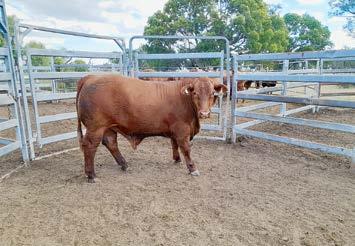
us two Reserve Champion Carcases and eight placings in the Callide Dawson Beef Carcase Competition,“ Mr Bradshaw said.
The Bradshaws also sourced - at the Power of Red sale in Toowoomba in 2023 - a Red An-
gus bull from Heather Davies from Rosemullion stud, Goomburra.
“We currently have some very nice weaners by the bull showing good potential, which we will enter into cattle competitions in the future,“
Mr Bradshaw said.
“If people have the time to go to the Power of Red sale in Toowoomba. there’s some good little studs there and it’s a good representation of the breed.
“And it’s also a rare opportunity to see a good set of Red Angus genetics in one place.“
The Bradshaw family is having a successful show season with Red Angus, winning champion heifer at the Baralaba Show and champion steer at the Callide Valley Show in Biloela, with a Red Angus Droughtmaster-cross weighing 715kg with two permanent teeth. The steer was sired by a Red Angus bull from Milton Fowler, Pittsworth.
Mr Bradshaw said entering stock in show competitions was an effective way to compare his cattle against others in the district.
“I don’t know what other producers do, but that’s sort of a way I benchmark myself, with everyone else in the area,“ he said.
“When I sell cattle to the meatworks - the Bradshaws supply their cull animals to Teys Biloela and aim for their steers to dress 350-370 kilogram and their heifers around 280-300kg - I try to adopt a lot of these strategies, and while they’re not going into a competition, I sort of like to think they are so I try present a good article direct to the meatworks.“
Mr Bradshaw said he remained as passionate as ever about breeding cattle.
“I just put my heart and soul into everything I do.“



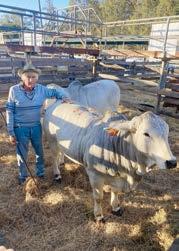

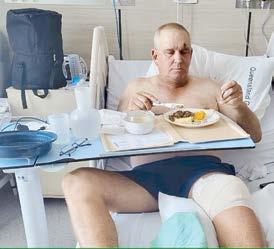
The 50th Anniversary Gympie Brahman Female Sale raised a cow load of cash for LifeFlight, after two cattle breeders donated $12,500 to the aeromedical charity.
Hosted at the Gympie Saleyards, Rockstar Brahman owners Stuart and Lynda Vollmerhausen donated $2,500 to the service from the sale of five heifers.
Mr Vollmerhausen has a personal connection to LifeFlight after he was airlifted to hospital from his Theebine property in 2023 when he was trampled by cattle.
“My day started like every other and the last thing I expected was a chopper ride to hospital,” Mr Vollmerhausen said.
“It’s a worthy cause to donate to and it’s reassuring to know LifeFlight is available out in rural and regional areas if we ever need it.”
Maryborough-based Brahrock Brahman owners Beryl and Royce Sommerfeld donated $10,000 from the sale of one of their heifers.
“It was a milestone event at the Gympie Saleyard this year and myself, my wife and family decided to donate to LifeFlight because we don’t know when we might hurt ourselves out in the bush somewhere,” Mr Sommerfeld said.
Mr Sommerfeld was also honoured with a Lifetime Membership Award from the Australian Brahman Breeders Association Limited (ABBA).
Along with the recognition for his substantial contribution to the industry, one of Mr Sommerfeld’s grey heifers sold for a record-breaking $62,000 to Stuart and Lynda Vollmerhausen.
LifeFlight Wide Bay-Burnett Community Engagement Lead Aleisha Evans said it was common for LifeFlight crews to attend cattle related incidents in the Wide Bay-Burnett area.
“Recently the Bundaberg-based aeromedical crew airlifted a man to hospital after he was trampled by a steer,” she said.
“This generous donation is very appreciated and we’re grateful for the support of our Wide Bay-Burnett communities.”
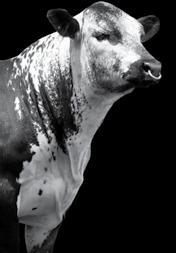
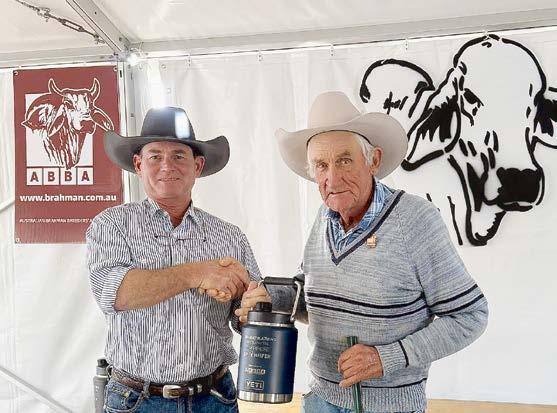
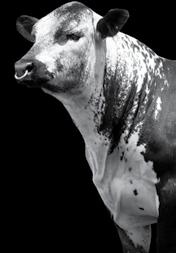
A meaningful initiative between the Camm Agricultural Group and Rural Aid has come to a successful close, with proceeds from the sale of 50 head of cattle helping fund critical support for farming families across Australia.
The cattle, which were inducted and fed at the Camm Group’s Wonga Plains Feedlot at Bowenville in February, were then processed externally.
Camm Agricultural Group donated the feed, animal health and freight contributions for the mob of cattle to Rural Aid, enabling the charity to continue its vital work in rural communities.
Camm Agricultural Group CEO Bryce Camm said the initiative was a practical and meaningful way to support those in need across regional Australia.
“After operating in rural Australia across four generations, our family intimately understands the trials and tribulations of life on the land,“ Mr Camm said.
“We see this as a great opportunity to offer a hand up, not a handout to those who have faced the challenges that mother nature can throw at our livelihoods on the land.
“Our family has always held the mantra that the best outcomes are achieved when we give back to the communities in which we are invested.
“I hope this inspires other beef community to think about how we can all contribute to those facing adversity.”
Rural Aid CEO John Warlters said the Camm Group’s donation would have a lasting impact.
“This is support that goes beyond words, it translates into direct help for farming families who are doing it tough,” Mr Warlters said.
“Initiatives like this show what’s possible when agriculture steps up for its own. We’re incredibly grateful to the Camm team for their leadership and generosity.”
Camm Agricultural Group operates eight properties across Queensland, turning off 90,000 cattle annually.
Its recently expanded Wonga Plains Feedlot

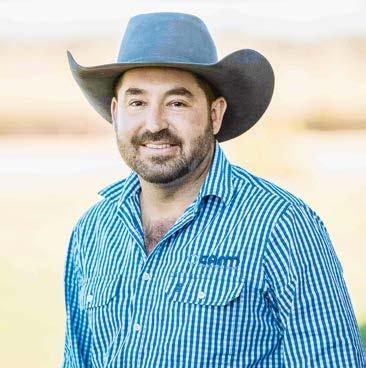
now has a capacity of 25,000 head, reflecting the company’s long-term investment in sustainable beef production.
As the initiative concludes, Mr Camm
encouraged others across the livestock sector to get involved where they can.
“Everyone in agriculture has something to offer,” he said. “Whether it’s livestock, logistics or

support services, it all adds up to a stronger, more connected rural Australia.”
* To make a difference, donate at www.ruralaid. org.au/donate or call 1300 327 624.
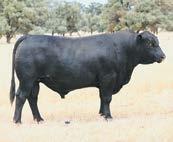

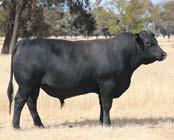
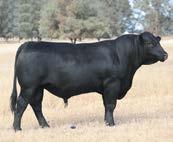



The Passmore family of Ellangowan, Queensland is proud to announce the return of Benjarra Limousins’ annual on-property bull sale on 14 August.
Over the years, Benjarra Limousin stud has established a strong reputation for breeding cattle that excel in both stud and commercial operations.
Their program has consistently produced animals that not only perform in the paddock but also stand out in the show ring.
Together, they have achieved numerous grand champion titles at major shows, success in led steer hoof and hook competitions and regular top prices in saleyards — from weaners right through to finished bullocks.
The 2024 sale was a testament to the strength of their breeding philosophy and the loyalty of their client base, with 30 out of 31 bulls sold and excellent support from repeat and bulk buyers alike.
This ongoing success reflects the confidence producers place in Benjarra bulls to deliver profitability, performance and predictability.
Benjarra bulls have been bought by a diverse range of operations — from dedicated stud herds to large-scale commercial enterprises — and have travelled far and wide to meet the needs of clients.
Over the years, cattle have gone as far north as Bloomsbury, to the western regions beyond Charleville, south to Tenterfield and throughout the local districts.
It is this widespread support and trust that drives Ben and his family to keep striving for continual improvement in their herd.
A core focus of the Benjarra breeding program is producing bulls that are bred tough to handle
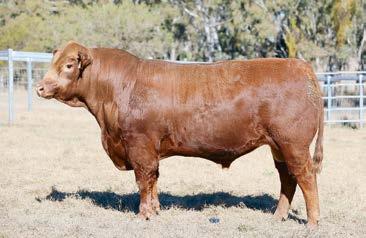
the varying conditions of Australia’s beef regions.
Whether the environment is coastal, semi-arid or high rainfall country, these bulls are developed to adapt and perform while maintaining consistent temperament and carcase quality.
This year, 38 carefully selected Purebred Limousin and Limousin-Angus cross bulls will be presented for competition.
Each animal has been bred with a clear purpose: to produce modern Limousin cattle that can meet the evolving demands of commercial beef production while maintaining the traits that
have made the breed so valuable.
Buyers can expect bulls that are high-yielding, heavy-muscled carcase traits with good fat cover to meet market specifications and exhibit strong growth and performance across a range of environments.
The bulls have maintained excellent docility and ease of handling and are sound, well-structured and ready to work.
The draft includes a good balance of red, black and apricot-coloured bulls, catering to different preferences and breeding objectives. Many bulls
are polled, with a significant proportion DNAtested homozygous polled, giving buyers confidence in the consistency of polled progeny. As well as homozygous Black and Red bulls also on offer.
All Benjarra registered bulls are fully sire verified and genotype tested, ensuring accurate pedigree and performance records.
Each bull has undergone a comprehensive health and preparation program, including vaccination, semen and morphology testing, weight recording and scanning.
Supplementary sheets detailing performance data and health treatments will be available on sale day for complete transparency.
Ben and his family take great pride in the bulls they present each year and remain committed to offering genetics that will make a positive impact in any herd.
Their focus on breeding modern Limousins is underpinned by decades of experience, rigorous selection and a genuine passion for delivering cattle that combine performance, profitability and temperament.
Whether you are looking to secure your next stud sire or to add performance-driven bulls to your commercial program, Benjarra is sure to offer something that meets your breeding goals.
The team warmly invites all past and prospective clients to attend the sale, inspect the bulls and enjoy the hospitality on offer.
With a proven track record of satisfied repeat buyers and bulls working successfully across the state and beyond, this year’s sale represents an excellent opportunity to invest in dependable, high-quality genetics.
Free delivery to those who buy two or more lots.
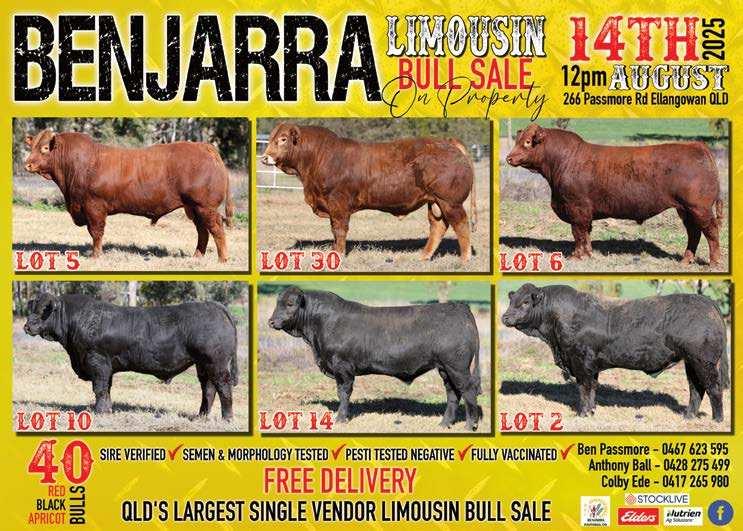

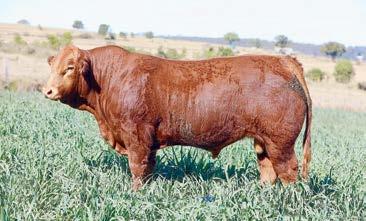

Kingaroy’s Jen-Daview Livestock are putting their best hooves forward for their upcoming inaugural Invitational Limousin and Angus Bull Sale.
A total of 72 top-notch bulls from eight sellers will vie for the attention of local and visiting buyers at the Coolabunia Saleyards on Saturday, 16 August.
Jen-Daview’s Brent Evans said the six dozen bulls on offer represent the very best that the invited breeders from Queensland and New South Wales could muster.
The invited Limousin and Angus sellers are Durkin Angus, MK Cattle, Kioma Angus, Mervale Livestock, Ruby Ridge Angus, HC Livestock, and Linvale Angus.
“They’re a really good run of bulls - all full of carcass, all carrying the right traits and breed character that we’re chasing,“ Mr Evans said.
“They’re all prepared to go straight to work now, to see this season out and last for as long as the breeder needs,“ he added.
Jen-Daview have 30 of their own bulls up for sale at Coolabunia, offering 24 heads of Limousin and six Angus cattle with plenty of body, the right genetics and solid temperament.
“All of our farm bulls for 2025 will be in the sale,“ Mr Evans said.
“For us it’s been a great opportunity to bring the Limousin and Angus bulls all into one place, because we have cattle in both breeds.
“We’re putting in plenty of work and hard yards to be able to run it [the sale],“ he said.
The team at Jen-Daview have also personally inspected each of the remaining 42 bulls from the invited sellers, vouching not just for the quality of the beasts but also the passion and drive of their owners.
“The people that were invited to come into the sale were people that we felt had like-minded programs to ours - people that have a commercial focus, a focus on breeding bulls with longevity in carcass,“ Mr Evans said.
“It’s a good, consistent run of bulls. All of the cattle are DNA-tested and verified for their car-
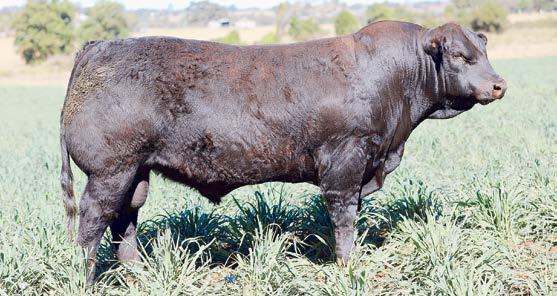
cass and breed traits as well as their genetics. They’re bulls that are going to last.“
Buyers can attend the Coolabunia Saleyards in person or place their bids online via StockLive.
The team at Jen-Daview also offer free freight Queensland-wide following the sale, ensuring that all purchases will arrive at their new home safely.
Whether buyers are looking to boost their breeding line-up with a strapping new bull or are looking for the perfect Angus or Limousin beast
to kick-start their herd, Jen-Daview’s inaugural sale will have them covered.
“There’s a bull for everyone; we have a very strong catalogue,“ Mr Evans said.
“The two breeds complement themselves very well; they’re a good option for cross-breeding and are certainly starting to get some momentum and dominance in the market.“
To view the sale catalogue, visit: • issuu.com/fscreative/docs/2025_jen-daview_ invitational_limousin_angus_bull

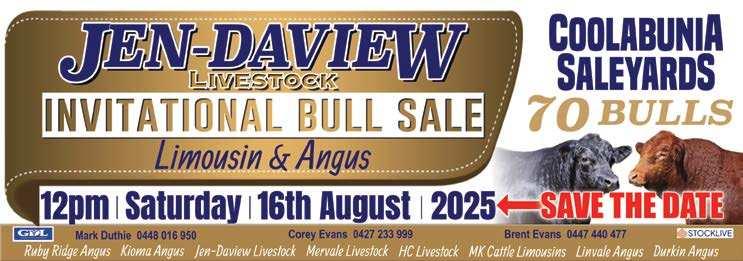
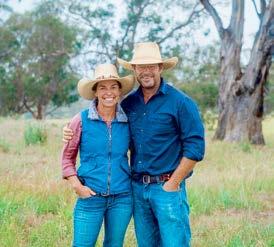
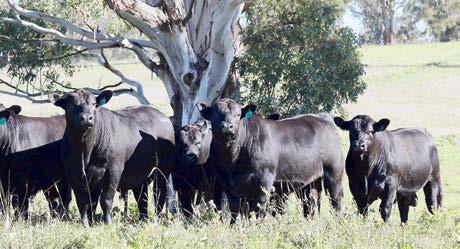
Ben Nevis Angus has come up trumps at the World Angus Forum Expo, which was held from 2-3 May 2025 at AELEC in Tamworth.
The expo attracted the largest gathering of registered Angus cattle in the Southern Hemisphere, attracting more than 500 head on the ground over the two days.
Among the 90 competitors in the Pen of 3 competition Ben Nevis Angus won both the Junior and Grand Champion Pen of Bulls, as well as the Senior Champion Pen of Heifers.
The competition was scored by a panel of three judges, including Dan Shike, Illinois USA, PJ Budler Texas, USA and Roger Evans, Tamworth NSW.
Animals were scored for their type and structure, their genomic EBVs and their uniformity.
The Ben Nevis bull and heifer teams were praised by the judges for their structural integrity, thickness and temperament, as well as their superior genetic blueprint.
The expo event culminated in the Elite Female and Angus on Ice sales.
Ben Nevis topped the Angus on Ice sale with a package of four embryos from their renowned Ben Nevis Jean family to Dunoon Sunstone, selling for an Angus Australia record of $6000 per embryo to Macka’s Pastoral.
Ben Nevis has been selling bulls for nearly 80 years and their on-property sale this year on 10 September in Walcha NSW will feature 100 of their pick bulls with additional paddock sales oc-
curring throughout the year.
Bulls for Queensland will be blooded and vaccinated for 3 day where required.
The family-run business focuses on temperament and type, utilising genomic selection and embryo transfer to splice into superior carcase traits.
Call Erica on 0427 780154 or Stu Halliday on 0417 674 412 for more information or an inspection.
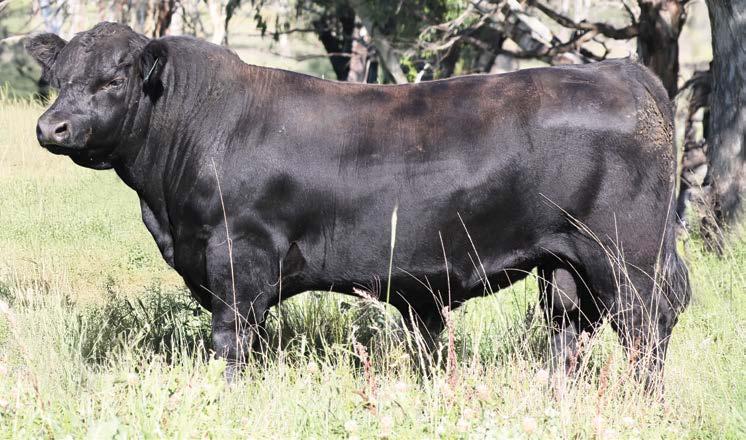
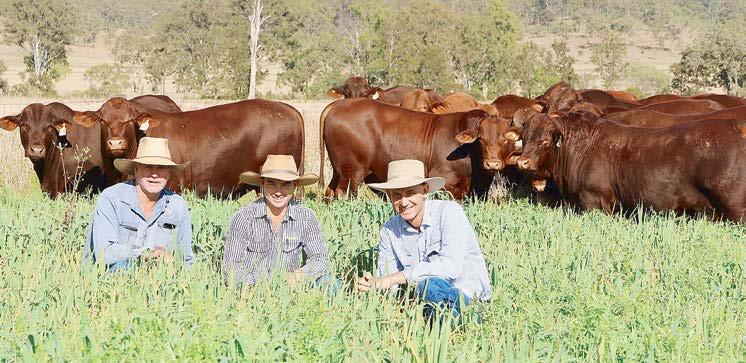
By Fiona Gowers
In a milestone shift for the family-run Talgai and Red Oak Santa Gertrudis studs, the 2025 bull-selling season marks the first time their sires will be sold online.
The Talgai Santa Gertrudis Online production Sale is scheduled from 18 September to 22 September, providing easier access to premium Talgai Santa and Red Oak Santas genetics optimised for fertility, muscle and temperate adaptability.
Talgai’s stud breeding objective remains focused: to produce herd-improving sires for commercial cattle producers.
Bartholomew and Co and AuctionsPlus will facilitate bidding on the 19 classified and commercial Santa Gertrudis bulls, aged 22 to 24 months, which are bred to meet market specifications.
Also in this sale are four PTIC stud femaleswith perhaps a calf at foot by sale time - as well as 24 commercial heifers ready to join.
Bartholomew and Co Garth Weatherall said the online sale allowed access to top-quality bulls without having to leave home.
“It also gives western clients the opportunity to buy top-quality coastal-bred Santa bulls with wonderful temperaments.“
Talgai has sold bulls exclusively through traditional auctions and will still send four sires to the Brisbane Valley Santa Gertrudis Sale at Toogoolawah this year.
The digital pivot offers multiple advantages for buyers and breeders:
• Greater accessibility: Buyers anywhere in Australia — can participate without travel constraints, broadening market reach for Talgai genetics.
• Convenience and efficiency: Bidders can evaluate bulls remotely at their own pace and bid in real time from their desktop or mobile.
• Consistent quality assurance: As in past sales, all bulls will undergo soundness, semen morphology and fertility evaluations prior to sale.
• Like earlier offerings from Talgai, bulls will be clearly presented with comprehensive data.
The Talgai enterprise was established in 2004 after owners Max and Roz Baldwin bought the Robenlea Santa Gertrudis stud and property, “Dingyarra” at Toogoolawah.
The Talgai Santas’ prefix and stud number 1990 entered the Santa Gertrudis industry in 2005 as the Baldwin family owned the Australian heritage-listed homestead Talgai near Allora on the Darling Downs.
The entire stud operation moved in 2007 from “Dingyarra” to the Darling Downs when Max and Roz purchased two other properties in the area. In 2014 the homestead was sold.
In March 2018 the company bought The Gorge and then the neighbouring property Broadlands. Both are located in the Nindooinbah area just outside of Beaudesert.
The entire stud operation is based at The Gorge and a commercial herd of Santa/Charolais/Angus breeders is run on Broadlands.
Along with both stud and commercial cattle operations, Talgai runs Talgai Prime Hay Suppliers. Quality hay is produced from both The Gorge and Broadlands.
Malcolm and Chick Gadsby have managed Talgai Santas 20 years.
“We’ve only been in the Nindooinbah area for six years,“ Chick said. “Before that we were on the Darling Downs and there’s a big difference coming onto ticky, coastal country, which we were partly prepared for.
“All cattle in our operation are blooded. The herd has adapted now but it took a couple of years.
“We find, however, when we send our bulls out towards the Darling Downs, Western Downs,
Maranoa and Central West Queensland as far as the Atherton Tablelands areas, they really thrive.“
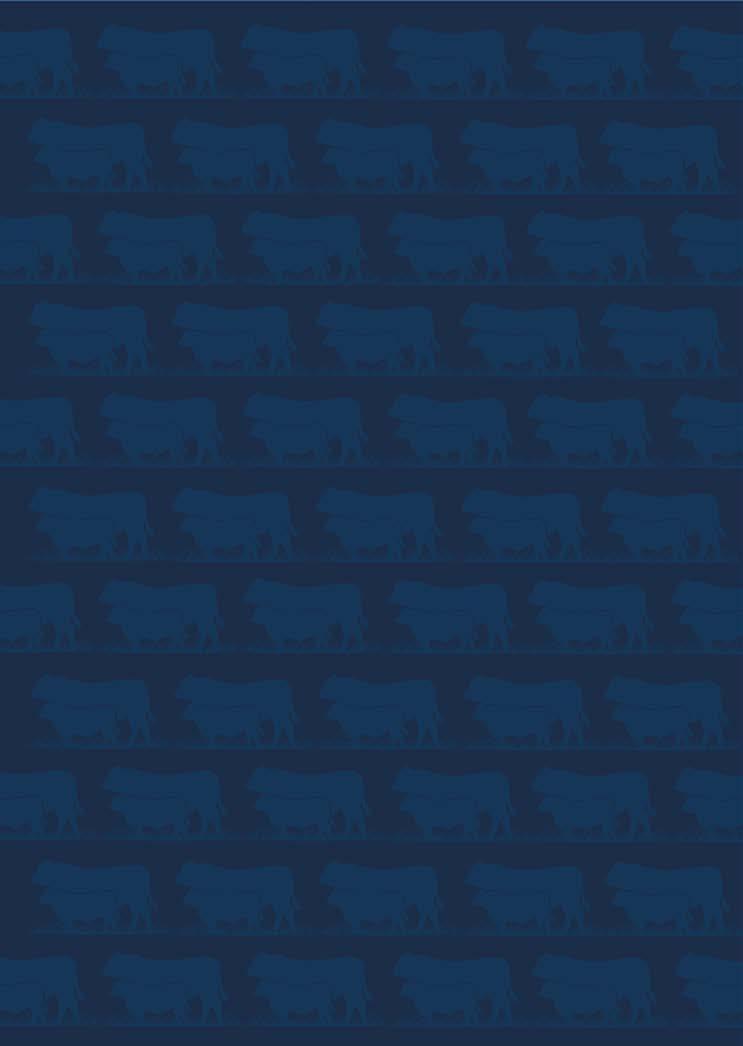
Talgai plans to host an online catalogue release in August, followed by pre-sale inspection windows and a scheduled sale date in early September.
Buyers will register on AuctionsPlus a minimum of 48 hours prior, confirm identity and complete induction modules —ensuring the bidding process is secure and smooth.
As other studs in southern Queensland continue with hybrid formats, Talgai’s full digital model may become a template for the future of livestock marketing — where high-quality Santa bull genetics from the Scenic Rim can now virtually travel nationwide.
In embracing online selling, Talgai Santa Gertrudis demonstrates leadership and adaptability — aligning time-honored breeding tradition with modern technology.
Talgai Santas will also host an on-farm presale inspection on Saturday, 22 September starting from 1pm.
Please call Malcolm on 0428 689 146 or Garth on 0438 793 100 to arrange an alternative time.

AUCTION START
Thursday 18th September 2025
QUEENSLAND 5:00 PM FINISHES
Monday 22nd September 2025
QUEENSLAND 12:00 PM
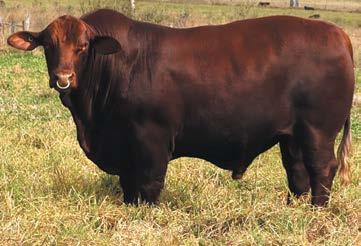
By Karen Simmons
Congratulations Roxanne Weston of RLR Photography for excelling at this year’s Barcy Show and taking out multiple awards in the photography division over the weekend.
Barcaldine Show judges and sponsors awarded Roxy some lovely placings, including Annual Show Champion and Reserve Champion for print.
Roxy is well known around the region for her amazing racing photography and secured first prize for one of her race shots in the Action/Racing category.
The Ken Wilson Pavilion opened its doors at 8.30am on Saturday to show case the best of this year’s display of cooking, flowers, fruits and veg, needlework, knitting, crafts, art and photography.
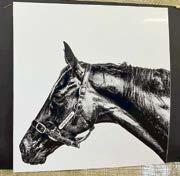
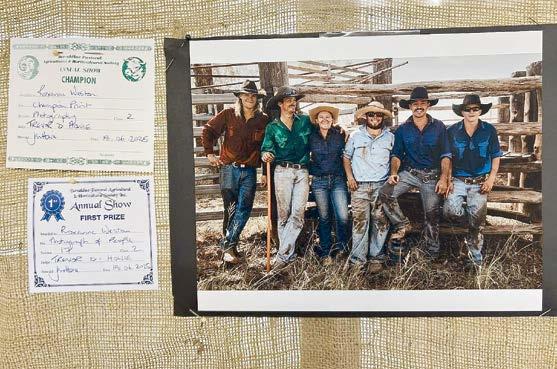

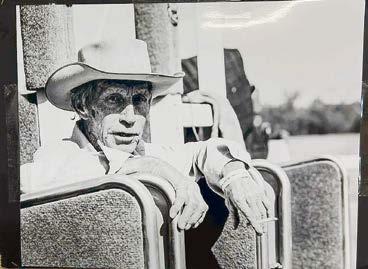
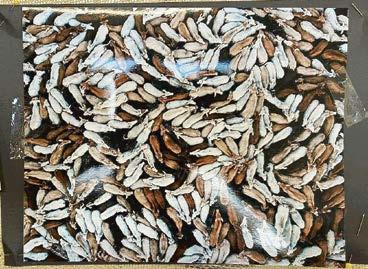
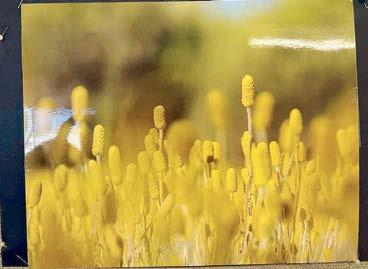
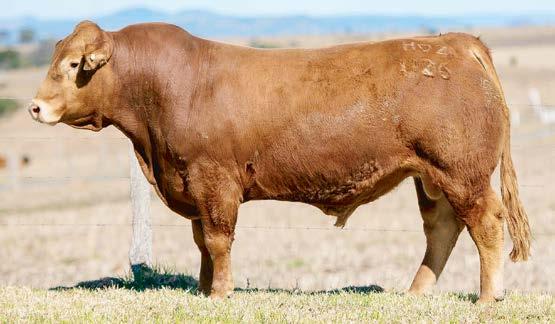
Welcome to the 2025 Gold Crest Limousin Bull and Female sale.
We extend a warm welcome to all prospective buyers, supporters and fellow cattle enthusiasts to our annual on-property sale for 2025. It’s a privilege to present this carefully selected lineup of bulls and females, bred with a clear focus on performance, structural soundness and commercial relevance.
At Gold Crest Limousins, our breeding program is founded on generations of cattle experience and a commitment to functional, profitable genetics.
Since trialling our first Limousin sire, the breed has continued to exceed our expectations — delivering high-yielding, easy-doing progeny that meet the demands of modern beef production.
Our 2025 draft reflects the culmination of years of genetic selection, utilising both leading Australian and imported bloodlines.
We place strong emphasis on structure, softness, weight-for-age, temperament and fertility— traits that underpin long-term herd profitability. Our bulls are bred and grown out in a real-
world environment, developed on scrub and forest country with seasonal access to forage crops.
Their ability to thrive under commercial conditions gives our clients confidence that they’ll go on to perform in a variety of operations.
This year’s catalogue features a standout group of bulls, suited for both commercial programs and stud operations.
These sires represent depth, muscle expression and balance — combining EBVs with physical correctness and quiet temperaments.
We are also pleased to offer a select line of females from our most consistent and proven cow families. All females have been strictly pastureraised, ensuring natural development and longevity.
We invite you to attend our Open Day on Sunday, 17 August 2025, from 10am to 3:00pm at the property (772 Plainby Road, Crows Nest QLD).
Private inspections can also be arranged by contacting our trusted agent Mark Duthie – GDL Stud Stock on 0448 016 950 or Darren Hartwig on 0428 736 470.
On-property inspections will also be available
on Friday, 22 August from 9am to 4pm and again from 8:30am on sale day, Saturday, 23 August 2025.
While photos and videos are available online, where possible we strongly encourage all prospective buyers to attend the sale in personthere’s simply no substitute for seeing the cattle first-hand.
We are grateful to the GDL Stud Stock team for their continued support and professionalism in coordinating the sale.
For those unable to attend in person, bidding will be available via phone through GDL or online via Stocklive Elite, where individual videos of each lot will be available for viewing prior to the auction.
We sincerely thank you for your interest in Gold Crest genetics.
We are confident that the cattle on offer will exceed expectations and make a valuable contribution to their new herds.
We look forward to welcoming you on sale day and sharing the next chapter of success with fellow breeders and cattle producers.


Gold Crest Limousin stud was founded on the principles of performance, profitability and structural integrity.
As fourth-generation cattle producers with a strong commercial focus, our journey into the Limousin breed began after trialling a bull over commercial females.
The result was immediate and undeniable — higher yielding progeny, heavier carcass weights and improved returns across the board.
Encouraged by this performance, we purchased a small group of foundation stud females in 2014. What began with just 10 head has since grown to a robust and fertile herd of 160 breeding females, calving annually under real-world commercial conditions.
At Gold Crest, we are uncompromising in our breeding philosophy. Our cows must be functionally sound, structurally correct, fertile, high milking and possess a calm, workable temperament.
We believe these maternal foundations are critical to producing bulls that not only thrive but deliver genuine paddock performance in any environment.
Our herd is run on a combination of scrub and forest country, with bulls developed on the same terrain to ensure they are resilient, naturally grown and ready to adapt.
When conditions allow, they are supplemented with oats and forage crops to enhance growth without compromising longevity or structural integrity.
Gold Crest genetics have earned recognition in the show ring, prime cattle competitions and carcase classes.
More importantly, our bulls are working successfully across Queensland, with repeat buyers praising their adaptability, performance and quiet nature.
Our focus remains on delivering structurally-sound, easy-doing bulls that offer strong weight gain, calving ease, softness and fat coverage - traits that consistently meet the demands of modern beef production, delivering more profit to the producer.
The Limousin breed continues to meet and exceed our expectations, aligning with our core values and delivering real results for commercial and seedstock producers.



“Wahroonga”, the home of the Sherry family, is on the western slopes of the Connors/Broadsound range about 180km south of Mackay, also the home of the Wahroonga Belmont Reds stud established in 2015.
Having been raised in a commercial crossbreeding operation with multiple breeds, we gave Belmont Reds a try in 2008, wanting to find a breed that would give us an efficient breeder that would produce a calf for us annually despite the vagaries of the central Queensland seasons.
A breed that would give us a more consistent article when it came time to sell, whether it be through yards or direct to processors.
A breed that would stay calm and be easy to handle in all situations, with three young children wanting to help their safety was important.
We had found the complete package, Belmont Red, the most underrated breed available to cattlemen and cattlewomen on the market, in our opinion.
Fast forward to 2025, we are preparing our 10th offering of bulls to the market, hoping that someone who is looking for the same complete package solution for their herd finds that at CQLX Gracemere, on 1 September.
We will offer 30, 21- to 22-month-old bulls we think people will look back on years later and say: “He was a good buy, he made a difference to our herd” every time they handle their daughters or sell the steers.
Half of our draft is ranked in the top 25 per cent on the self-replacing index. This index combines the EBV traits to give you one number to rank their genetic merit.
In all, 22 of the bulls are better than the breed average for days to calving, some high-growth and some low birthweight bulls for heifer matings.
Thirteen are homozygous polled and lots more polled with a few scurred bulls.
All are quiet and easy to handle, sound both structurally and fertility-wise having passed a semen morphology test, are vaccinated and prepared for a long working life not just for sale day.
We are also offering nine PTIC yearling-mated heifers out of our cohort of 180.
These heifers for the sale will calve out during December and early January.
All are polled with five homozygous polled and are vaccinated.
The heifers will be presented in paddock condition and will have a few months at their new home before they calve.
Contact me if you have any questions about the heifers or bulls for September.
Greenhills Belmont Reds: Sustainable Reds for greener pastures
Situated in the fertile Brisbane Valley, Greenhills Belmont Red Stud operates from Graceview — a property combining productive creek flats for haymaking with undulating scrub country suited to breeders and grower cattle.
The story of Belmont Reds at Greenhills began in 2008 with the purchase of a foundation herd from the owner’s parents, who had bred stud Bel-

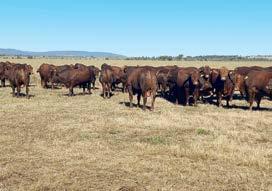
mont Reds since the early 1980s.
This step not only continued a family tradition but also laid the groundwork for the stud’s future.
Greenhills expanded in 2010 by leasing a property at Linville, furthering their commitment to quality breeding.
Early on, the operation faced a shortage of pure Belmont females, so commercial females were introduced and bred with select Belmont bulls, building a resilient herd well-suited to the environment.
Belmont Reds quickly proved their strengths: a calm temperament, low-maintenance care, ease of calving and adaptability to market needs.
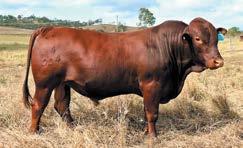


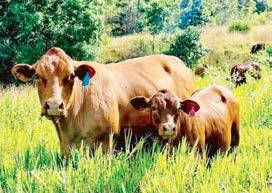
A defining moment came during the 2017–2019 drought. Despite harsh conditions, the herd achieved an impressive 90pc calving rate, demonstrating the breed’s hardiness.
By the end of the drought, the Greenhills herd had become predominantly Belmont Red, underscoring the breed’s superior adaptation.
Belmont Reds at Greenhills consistently outperformed other breeds, notably in tick resistance, which reduced reliance on chemical treatments and lowered operational costs.
Their ability to thrive on native pastures with minimal intervention further enhanced the sustainability of the operation.
This year, Greenhills has selected six top bulls for the National Sale in Gracemere, chosen for their growth, confirmation, temperament, fertility and strong Estimated Breeding Values (EBVs), all detailed in the sale catalogue.
These bulls were raised on pasture and only introduced to grain in May to ensure a smooth transition to their new environments.
Greenhills Belmont Reds are known for their fertility, docility, premium carcass quality and tick resistance, making them a valuable asset for producers seeking resilient, high-performing cattle.
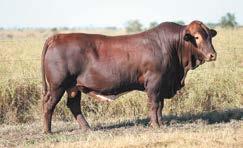

Coolabunia Classic Charolais sale 2025
Silverwood
Silverwood Charolais this year has 12 bulls to sell beginning at Lot 1 to 6 and then Lot 48 to 53. All 12 bulls have been DNA tested, there are five homozygous polls and all others are tested heterozygous polled. There are four red factor sires to choose from. Ten of the 12 bulls are our first offerings by herd sires Charnelle Rory and Black Duck Rough Justice.
We welcome inspections prior to sale day or just general enquiring.
River Run
In 2025 we will be at Lots 7 to 18 and Lots 54 to 59. This year we have seven DNA-tested homozygous polled, seven polled or polled scurred and four horned bulls. The line-up of bulls this year are from our new sire – 2022 Ekka interbreed champion – Cassaglen Raptor (PP), as well as our sires Ascot Rafferty (P), Palgrove Nebraska (P) and AI sire OW Lead Time (P). Cassaglen Raptor is represented by four bulls in the sale.
Ascot Rafferty is represented by eight bulls in the sale. Lots 7 and 11 are standout bulls from Rafferty. Palgrove Nebraska (P) has five sons in the sale. Our bulls are breedplan recorded, fully vaccinated, semen and morphology-tested and all bulls are sire verified, DNA-recorded and BPAtested. We are tested as a JBAS 7 herd.
Diamond L
This is the Lee Family’s 13th annual classic. The line up of bulls presented this year are all by AI sires except for lot 62 by Calmview Lucky and two Mountview bred bulls that were brought as oneweek-old calves on their mothers and carry David Reid and Mountview genetics.
The bulls have been prepared on a combination of oats and grain. They have had a consistent
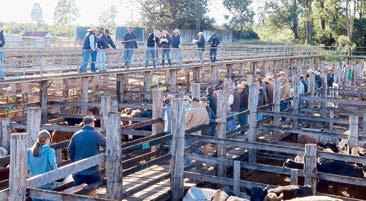
build up with steady weight gains. This year a lot of our top bulls carry the Elders Blackjack genetics, they are large framed bulls with good bodies, length and fat coverage. All bulls in the sale are polled except for the two Pinay bulls carrying the French genetics, which are scurred.
Charnelle
Charnelle Charolais is delighted to offer 16 industry-focused Charolais bulls for sale this year at the “Classic”. The draft includes 15 polled bulls and one polled/scurred bull. Five of the polled bulls are homozygous polled, one is full French, six of this year’s draft are red factor. All our bulls have been full parent, sire or dam verified. All our bulls have been DNA tested, 100K profiled and BPA tested. All our bulls are tested PI negative.
This year our poll full-French import Johnny is represented by three real handy bulls including the lot 26 bull Ultra. Ultra (P) (FF) has a lot of length, very tidy structure, beautiful nature and heaps of red meat. Lot 33 Uni (PP) also by Johnny, is a bull we think highly of and have used him in our herd. Out of a Mac 2244 female he has the pedigree and so much more to rate him as a herd sire. You will notice in 13 of the pedigrees, the influence of Palgrove female cow families. These include Dreamgirl, Appeal, Digna, Friesia, Panache and Elegance.
LHU
We are proud to announce our new herd sire ANC T884F, an ANC Quinn son purchased privately from ANC Charolais. We are looking forward to
his calves arriving in the spring, along with our AI-sired offspring.
Our female herd is expanding and we can’t wait to see what they produce over the coming years.
This year we present two young sires for your consideration. Breedplan recorded and ready to perform.
Clearview Charolais is a family-run operation established in 2020 with a clear goal to produce quiet, functional, fertile calves with plenty of shape and thickness. These qualities are evident in our foundation females, primarily consisting of Trevlac and Palgrove bloodlines. We’ve further strengthened our genetics through our herd sire, Brendale Ridley who was Reserve Calf Champion at BEEF 2021 and our new sire Yuranga Park Real Impact.
Brendale Ridley calves have already made their mark at the Brisbane Royal and other major events. In 2024, two of our first registered females under the Clearview prefix - Clearview Raine and Clearview Actress 2 - were awarded Champion Charolais Female and placed in the top five Interbreed Females at both BEEF and the EKKA. Cooranga Cooranga Charolais would firstly like to thank the Coolabunia Classic Committee on the invitation to present bulls to the sale. We as a family established Cooranga Charolais Stud in 1994 and then from there grew and developed to produce bulls focusing on low birth weight, high growth rate with finishing attributes to fit all carcass specifications
Regards Graham and Katrina Blanch.
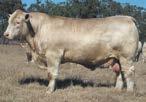
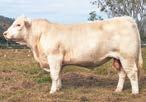
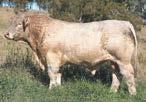
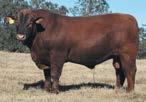
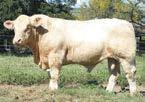
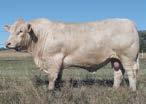
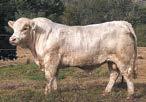
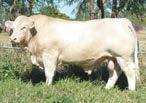
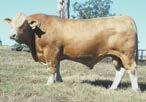
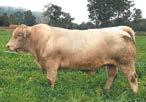
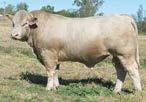


By Erle Levey
We’re not in Kansas anymore ... it’s the famous line from The Wizard of OZ in which Dorothy explains to her dog Toto where they have ended up after a tornado transports them from their home in Kansas to the magical land of Oz.
The same could be said of Widgee endurance horse rider and trainer Gayle Holmes.
At Imbil on the weekend Gayle passed the 30,000km mark in her recorded rides with Australian Endurance Riders Association (AERA).
That’s about 10 times the distance from London to Athens. ... and three times the distance from Queensland to Kansas - the site of one of her most memorable rides.
Gayle has been riding since 1990 and only four others have achieved the 30,000km milestone in Australia - Meg Wade, Kristie Taprell, Allan Caslick and Jennifer Gilbertson.
As such, she is the first rider from Queensland and, to make things even better, Gayle was doing it on her home turf.
Her ride was part of the 2025 Queensland Endurance Riders Association (QERA) State Championships and the 2025 Equestrian Australia National Championships held at Stirling’s Crossing Equestrian Centre.
There were more than 150 nominations for the three-day event, that included nine rides ranging from 40km to 160km.
Gayle was riding Bacchante Catching Fire, an 11-year-old grey Arabian gelding she has had since 2021.
Achieving the 30,000 mark took its time as anticipation of reaching the milestone increased the pressure to succeed.
“The horse only has to sneeze and I’m all over the place,’’ Gayle told me before Sunday’s 120km ride.
“He has got a bit of a flight instinct. I say my prayers every time I ride him.
“Yet he’s a good horse which is better than being too comfortable. The only time I’ve come off is if I’m not concentrating.’’
The 30,000km milestone is a testament to her dedication, perseverance, and partnership with her horses.
In that time Gayle has completed 17 Tom Quilty Gold Cups - a 160km ride regarded as the premier endurance event in Australia.
Held each year in different states on a roster basis, riders who successfully complete the course in 24 hours are awarded a Quilty belt buckle. Among them have been two second placings.
I caught up with her at the finish line at Imbil on Sunday, where she came third in the middleweight division.
“It’s a huge achievement and a big relief,’’ she said. “In the 61 years the sport’s been going only four people have achieved this.
“There have been a lot of memories over the years - good with the bad.
“I’ve been riding some very good horses.
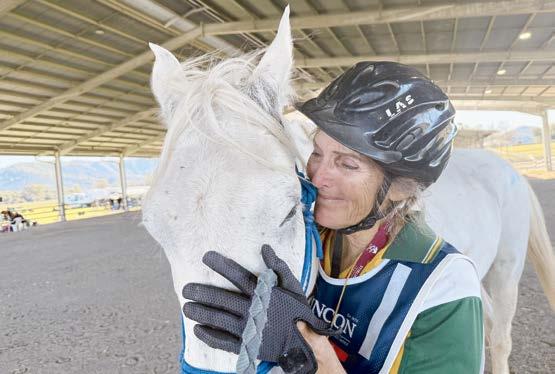
“Looking after them as is a big thing. At one time I had nine in training.
“I know my horses are well looked after.’’
Gayle has ridden in FEI Equestrian World Championships in America - that was at Fort Riley, Kansas, in 1996.
Riding Far-A-Way Verdict, they came in 14th and she was the only Australian to complete the course.
Having also competed at the FEI World Equestrian Games two years later in Dubai, Gayle’s career has included working as a horse trainer both there and Bahrain.
Faraway completed 11,195km in his 33 years.
“I flew with him in the plane to America. When you love something so much you want to be with them.
“I’ve had some very good horses over the time.
“I don’t look at breeding. I look at them and consider whether I like them.
“I just look at a horse and say ’I like him. I’ll give him a go’.’’
Going to America has been the most memorable ride for Gayle as she didn’t have the money for the fare.


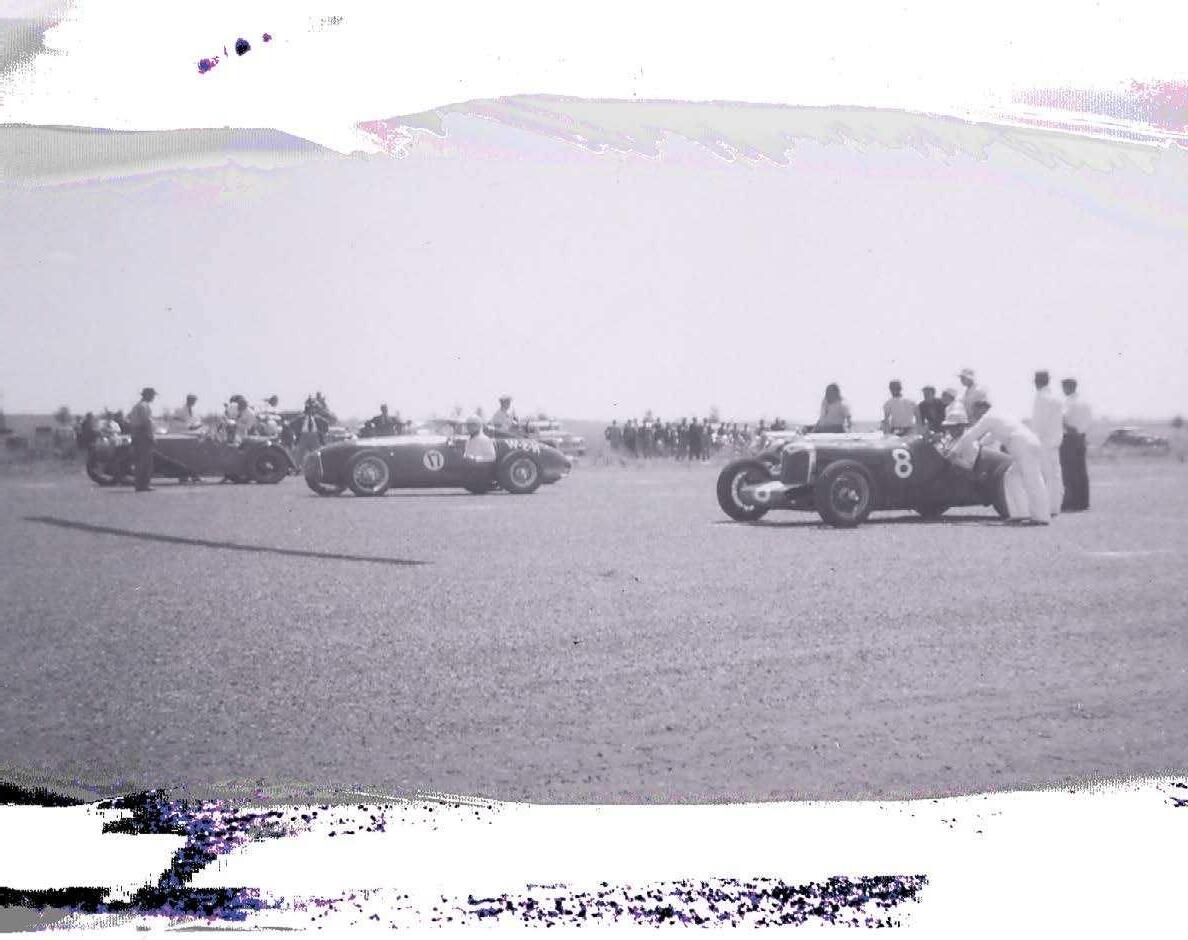
Instead, she raised $40,000, mainly with sponsorship from Laminex and Formica, as well as some donations and raffles.
Gayle also represented Australia at the Fauresmith 200km marathon ride, near Bloemfontein in South Africa, and this time the team won a gold medal.
For her, the key to endurance success is finding a good horse and working as a team.
Gayle started endurance riding on Faraway Verdict.
That was in a 600km race between horses and camels ... from Wentworth on the Murray River at the New South Wales-Victoria border, to Kingston - a coastal town about 300km south of Adelaide.
Gayle and Faraway finished third in the race that showed horses were fastest over that course.
“He was just a beautiful horse.
“He once saved another horse that was drowning in a river.
“Another time he saved me. I was riding another horse and hanging off him trying to retrieve the weight belt that had slipped.
“The fear in my voice made Fara stop, turn around and come back to me.’’
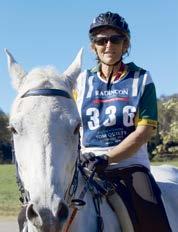



By Fiona Gowers
Georgia Ditchfield, a student at the University of New England (UNE), felt pursuing a degree in agricultural science would be a natural step after growing up on a mixed farm near Coonamble, NSW.
She has had many significant opportunities during her time at university, including the chance to participate in the 2024–25 AgriFutures Horizon Scholarship program and international study tours.
Due to her degree, Georgia has participated in various learning opportunities, including two overseas study tours that have broadened her perspective on agriculture beyond the context of Australia.
One of Georgia’s most memorable experiences was a trip to the United States, where she learnt about various agricultural businesses.
“The US was quite similar to Australia in terms of agricultural practices,” she said. “It gave me valuable insights into the similarities and shared challenges we face globally.”
However, it was her trip to Fiji that was the
most eye-opening.
“The Fiji tour was part of my degree and it completely changed my perspective,“ Georgia said.
“I realised that despite growing similar crops, the agricultural practices in Fiji were vastly different. I noticed significant differences in education levels too – the concepts shared between adults in the industry were often the same ones I learnt as a teenager in Australia.”
Georgia’s career in Australia is thriving. She recently started working in a soil and plant tissue testing laboratory, focusing on plant and seed testing.
“I’m responsible for testing plant tissues for nutrients and nitrates, as well as conducting germination and vigour testing for crops like chickpeas, wheat and barley,” Georgia said.
The AgriFutures Horizon Scholarship has helped Georgia achieve her career goals.
Georgia will receive a $10,000 bursary over the course of the two-year program to help with university and living costs and she will attend annual four-day professional development workshops.
The skills and connections Georgia needs to
succeed in the agricultural sector are made possible by these resources.
Also, each year, Georgia will participate in two weeks of industry work placements sponsored by her sponsor, the Grains Research and Development Corporation (GRDC).
“I feel incredibly fortunate to be supported by GRDC through the Horizon Scholarship,” Georgia said. “The opportunities I’ve received so far have been invaluable in helping me grow both professionally and personally.”
GRDC capacity and extension manager Charleton Glenn said the GRDC was proud to support young professionals like Georgia through the Horizon Scholarship.
“We hope that this continued investment into future generations broadens the scope of students who look to explore career opportunities in the grains industry.“
With a strong foundation in agricultural science, international experience and the support of the AgriFutures Horizon Scholarship, Georgia is well on her way to making a meaningful impact in the industry.
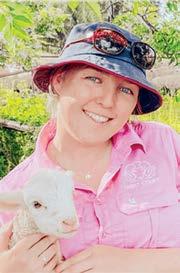
The national winner and runner-up of the 2025 AgriFutures Rural Women’s Award will be announced at a gala dinner at the Great Hall, Parliament House in Canberra on Tuesday, 28 October 2025.
The prestigious event celebrates female-led ingenuity in the regions.
The AgriFutures Rural Women’s Award, with the support of platinum sponsor Westpac, showcases the critical role women play in rural, regional and remote businesses, industries and communities.
This year’s gala dinner marks a major milestone; 25 years of spotlighting rural women who are shaping the future of our nation.
The black-tie celebration will unite alumni, government officials, industry leaders, private sector and supporters from across the country for what promises to be a night of inspiration, connection and powerful storytelling.
The annual gala dinner is an opportunity to celebrate the forward-thinking, courageous leaders who come from industries across some of the remote areas of Australia, including each of the state and territory winners: Nicole McNaughton (QLD), Carol Mudford (NSW/ACT), Dr Mary Cole (VIC), Sarah de Jonge (TAS), Kelly Johnson (SA), Kristy Hollis (WA) and Isabella Thrupp (NT).
Master of Ceremonies for the black-tie evening is 2024 AgriFutures Rural Women’s Award national winner Tanya Egerton.
The event is now open to the public to buy tickets.
AgriFutures QLD Alumni state chair Ann Ross said the award’s 25th anniversary was a powerful moment to reflect and recharge.
“For 25 years, this award has celebrated women who don’t just contribute to their communities; they transform them,“ she said.
“The gala dinner is an opportunity to honour the latest cohort of changemakers and be reminded of the innovation, resilience and leadership that drives rural and regional Australia forward.“
Now celebrating its 25th year, the AgriFutures Rural Women’s Award has become a nationally-recognised platform of influence across parliament, industry, media and its extensive alumni network.
Each state and territory winner receives a $15,000 grant for their project, business or program, access to professional development opportunities and alumni networks.
The national winner and runner-up will receive an additional grant of $20,000 and $15,000, respectively, thanks to the awards platinum sponsor, Westpac.
AgriFutures Australia is committed to the future growth and advancement of the award as a means of identifying, celebrating and empowering women.
The Rural Women’s Award is one of many AgriFutures Australia initiatives ensuring our rural industries prosper now and into the future.
For more information about the awards, head to agrifutures.com.au/rwa.
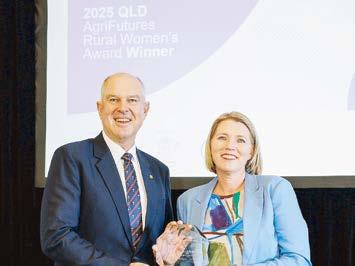

With plenty of Red Angus-cross cattle making a strong impact in steer and heifer competitions, now might be the right time to make the move and introduce some Red Angus genetics to your beef herd.
Renowned worldwide for calving ease, maternal excellence and carcase qualities, a great selection of bulls, females and genetics will once again be on offer at the Power of Red XI sale at the Toowoomba Showgrounds Equestrian Arena on Saturday, 6 September, commencing at 11am.
Twenty three bulls, seven females and eight genetic lots will be on offer from nine different vendors in Queensland and NSW, providing buyers with a great range of options to choose from.
David and Ashleigh Hobbs, Round-Em-Up Red Angus, Molong, NSW opens the batting in this year’s sale with a BJR Make My Day bull. He is the first of eight bulls in this year’s sale from David and Ashleigh. Their other lots include a solid run of seven bulls, comprising Lots 17 – 23. Coming in at the loss of the first wicket is the Boonyouin Reds team from Maryanne Kearney, Kingaroy QLD. Maryanne this year presents a strong line-up of five bulls, starting off with Lots 2 – 5, then a younger lot comes up later in the sale at 13. Yet again this draft of bulls will be sought after if previous sales are any indication.
Next up will be a group of three bulls offered by Heather Davies, Rosemullion Red Angus, Goomburra, QLD. Heather has Lots 6, 7 and 8 entered for this year’s sale and no doubt they will again be in strong demand.
Peter and Trina Redgwell, Heartland Red Angus, Tamworth NSW will be next to face the bowling with Lots 9 and 10. First-time vendors at POR X, it’s great to see Peter and Trina back with us again this year.
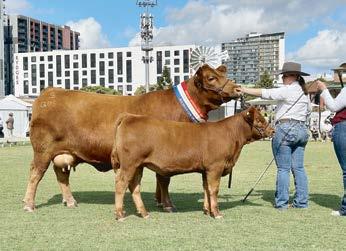
Kirrily Johnson-Iseppi and family, GK Livestock, Dalby QLD will be presenting only one bull this year in Lot 11, but what a run-scorer he will be for the purchaser of this lot. By Red Wheel Stark out of an Assassin daughter, he is sure to garner a lot of attention.
Lot 12 in this year’s sale is presented by Alan and Lucie Brown, Keen Edge Red Angus, Pittsworth, QLD. Alan and Lucie’s bulls have met with strong buyer demand in previous years, so it
wouldn’t surprise if this young bull again does the job for Alan and Lucie.
Rounding out the sale will be bulls presented by two of our junior members. First up will be Lots 14 and 15 presented by Amelie Martin, AKM Red Angus, Stony Creek QLD.
Rounding out the batting order and our final bull vendor for POR X1 will be Lot 16, presented by Lachie Moore, Moorevale Red Angus, Langley








Vale NSW. Lachie was part of the 4 person team representing Australian Red Angus at the recent World Angus Forum.
Following on from the bulls will be seven heifer lots
First of the heifers will be Lot 24 from Alan and Lucie Brown, Keen Edge, Pittsworth QLD. Following on will be three heifers, Lots 25, 26 and 27 from Linda and Phil Matthews’ Pledge Red Angus, Kingaroy QLD. In a nice twist of fate, all three Pledge heifers are sired by a graduate of our sale in Greenwood Park Simba S22. Rounding out the heifer portion of the sale will be Lots 28, 29 and 30, presented by David and Ashleigh Hobbs, Molong NSW.
After the completion of the live lots there will be one embryo package (GK Livestock) and seven semen packages presented by GK Livestock, Heartland Red Angus and Round-Em-Up Red Angus.
Selling agent for the sale will be Nutrien Livestock, Toowoomba. The live lots will be available for inspection at the Toowoomba Showground’s Equestrian Arena on Friday afternoon 5 September and the following morning prior to the start of the sale.
Lots will be auctioned from screens at the sale, with animal welfare considerations from the vendors doing away with running the animals through a sale ring. The sale will run on Stocklive, so buyers can choose to bid in person at the showgrounds, through a Nutrien agent or online.
In closing I would like to acknowledge our major sponsors for this year’s sale in Stag Machinery and Farmer’s Breeding Supplies.
These sponsors help get this product to you, so if you could help us out by supporting them, the sale vendors would be grateful.









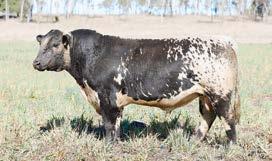
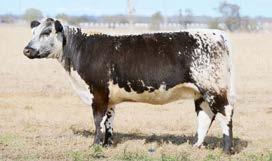
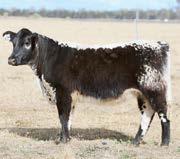
This is going to be big! A huge reduction sale at Dorroughby Speckle Park, which includes all retained females over the years that have produced some absolutely outstanding progeny.
A huge array of genetics, great quality bulls and females will be offered. And, the best part, we have managed to secure the old selling complex at Dorroughby, which was sold last year, thanks to Suzie.
Open day is Saturday, 16 August, 2025, while sale day is Friday, 23 August 2025 from 11am at 93 McGowan Road, Westbrook Queensland.
At Dorroughby Speckle Park our mission is clear — to produce cattle of outstanding quality for both the stud and commercial cattleman across Queensland and Australia.
Since our establishment in 2018 on the rich soils of Westbrook - near Toowoomba - we have been committed to breeding elite Speckle Park cattle that thrive in all Australian environments — from the snowfields to the outback heat.
This is by far the best we will ever offer, with 30 bulls and a huge female reduction, 37 of their absolute best proven females that had been retained in the herd, plus a huge range of genetics.
“We are proud to offer our absolute best — these bulls and females represent the future of profitable beef production in Australia,” Dorroughby stud principal Dean Missingham said.
Speckle Park cattle are renowned for their ability to produce a consistently high-quality carcass, with excellent yield, marbling and fat coverage, without compromising eating quality.
These polled, British-bred animals are also known for their adaptability, moderate frame size and exceptional feed conversion efficiency.
“We were drawn to the Speckle Park breed for their superior yield without sacrificing fat coverage or tasting qualities,” Mr Missingham said. Built for Australian conditions
Our herd has been carefully selected for structure, performance and temperament.
Dorroughby bulls are already performing across Australia in diverse and demanding conditions — from Tambo and Charleville to Winton — where their heat tolerance, moderate frame size and efficient feed conversion consistently deliver results.
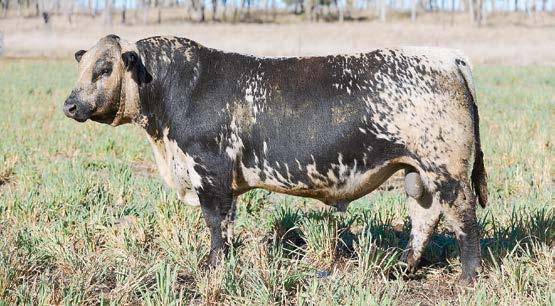
Lot2.(Supplied)
“Our Speckle Park cattle impressed us during the drought years of 2018–19 — their ability to maintain condition and perform on limited feed far exceeded our expectations,” Mr Missingham said.
“We believe temperament is one of the key drivers of productivity. Quiet cattle are easier to handle, grow better and reduce risk on farm.
“An animal has three main profit inhibitors: injury risk, poor weight gain and carcass downgrading. Good temperament is key to avoiding all three.”
This year’s fourth Annual Invitational Sale will be our biggest and best yet. We are offering
more than 25 purebred Speckle Park bulls and more than 35 purebred females, including every retained female from our breeding program over the past seven years.
These are proven, high-performing females — the heart of our herd.
All sale animals are: semen tested (motility and morphology) and their results are outstanding. All bulls above 80 per cent, lowest was 74pc and all morph tested bulls passed. Indeed, 14/25 had morph over 90pc.
Sale agents are Jason and Garth Fitzgerald, along with Michael Smith, Elders and Stocklive.
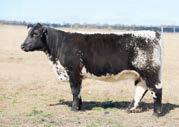


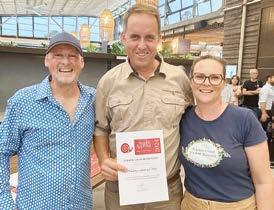
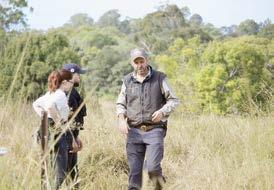
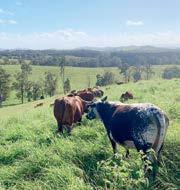
In an Australian rst, Mary Valley farmers Tim and Amber Scott have been accepted into Slow Food Farms, a world-wide movement to foster good, healthy and fair farming methods. ERLE LEVEY was at Kandanga to talk about what this means for consumers and the wider community.
Care for their livestock, the soil and involvement in the community has seen Mary Valley farmers Tim and Amber Scott recognised in an Australian-first by Slow Food International.
Tim and Amber, who run Kandanga Farm Store and K2 Organic Beef, have been accepted into Slow Food Farms to encourage good, clean and fair food for all by utilising sustainable methods.
Slow Food is active in more than 150 countries and the Scotts are among some 60 farms to date who have been recognised for their philosophy.
Kandanga Farm Store is the only rural store in Australia that focuses on organic and regenerative food production. Tim and Amber are also farmers in the Mary Valley, running about 350 head of cattle on four holdings.
They are both proud and excited at what they are doing within the community - the farm store acting as a hub for seminars in agroecology as well as events to celebrate healthy food.
After being recognised as a nation-wide voice for organic, regenerative, syntropic and holistic farming, being accepted by Slow Food Farms is validation of their vision, hard work and ethics.
Yet the Slow Food acceptance also comes from the way they are connected with the Mary Valley community.
The announcement will have world-wide impact in growing awareness of the clean, green and healthy way food can be produced in Australia.
It will also act as inspiration for farms with similar direction to apply for the status.
Agroecology is sustainable farming that works with nature. It’s about how to design and manage sustainable food and farming systems, with methods that increase yields while reducing environmental impacts.
Slow Food Farms are a tangible example of how agriculture can be both environmentally friendly and deeply connected to local communities.
Each farm in the network embraces the principles of Slow Food, promoting biodiversity, adopting agroecological practices, and fostering strong ties to the land.
“We haven’t changed anything to get Slow Food Farms accreditation,’’ Amber said.
“It could be used by other farmers if they wanted - or were prepared to change their activities.
“For us, we were already doing it.
“There were questions about chemical use, and obviously we are organic. Animal welfare was very high on the criteria, such as how calves are handled.’’
The use of sheds for keeping livestock in the harsh northern hemisphere winters came up but Amber explained they are not needed in Queensland.
“We have complete solar power - portable solar fencing units, solar-powered water pumps, and the investment in solar for refrigeration.
“The other really interesting thing was the social implications and contributing to community, which is really lovely.’’
Slow Food Farms are set to become the largest global network of farms dedicated to producing good, clean and fair food in a way that’s rooted

I think it was the most comprehensive of all the different verifications we’ve been through. so that’s why we’re excited about it.’’
in agroecological principles.
Aligned with Slow Food’s philosophy that everyone deserves access to nourishing food that supports communities and strengthens local economies, these farms are designed to embody the future of sustainable agriculture.
This is in contrast to farming and food distribution systems that affect biodiversity loss and the depletion of vital natural resources, while deepening social inequalities - small farmers and communities can be put at risk by corporations, all the while grappling with natural disasters, health crises and unstable markets.
Meanwhile, consumers are often left with limited access to sustainable alternatives.
Slow Food unites all those who believe in producing and consuming food with respect for people, animals and the planet - from farmers to food artisans to conscious citizens.
A Slow Food Farm is cultivated for agricultural purposes according to the principles of agroecology, used for growing crops and/or for raising animals for human consumption. It may include a processing unit but cannot be solely for processing.
By integrating farms into resilient local food systems, Slow Food Farms not only enhance farmers’ livelihoods but also ensure fair compensation and long-term economic stability.
It respects fairness to farm or production
workers as well as to customers in regarding safe working conditions and pay, and proper prices being paid for food at markets and retail outlets.
Tim and Amber started the farm store in 2015 in the house across the road, and then built on the present site. They moved into the store at the end of 2017 and have since developed their K2 Organic Beef operation.
Their move down the regenerative farming route had no definite starting point, rather something that evolved over time from their individual backgrounds.
“I don’t know why it happens but it does seem to help contribute to a better social network and outcomes for people within community,’’ Amber said.
“It’s the way you think - sharing knowledge, we’re running farm-based events as well as foodbased events which again has more community building.
“We are creating opportunities for other people.
“There is a local woman who collects the tallow that comes from animals and makes it into skin-care products, so that’s part of the social network.
“Slow Food Farms really liked this cross-pollination of ideas - of people coming to the store and farm, whether that be customers or backpackers for work.
“It’s really interesting, especially exchanging ideas with the European ones.’’
Tim grew up on the land at Roma in Western Queensland and organic methods were more of a necessity for his parents than a decision. It was open grazing land and the cost of chemical pesticides as well as synthetic fertilisers was prohibitive.
Amber was from Brisbane but has always had an interest in food.
They met at university and have continued to research organic and spray-free methods of farming with their business at Kandanga.
“I actually found it challenging at uni because it was nothing about holistic farming or learning from nature,’’ Amber said.
“There was nothing about learning from nature. It was all about chemistry.
“I studied business so didn’t know about chemical issues.
“To me, agri-business was all about what you did at the farm and when the foodstuffs left the farm.
“It wasn’t actually about how you build resilient farming communities or how the farmer is actually the first part of the chain of civilisation.
“Without farmers we are hunter-gatherers. They are fundamental to societal resilience, people’s wellness and well-being, as well as their own happiness.
“The idea of using poisonous elements to grow food has completely baffled me forever.
“I don’t understand how we can say ’but that’s a good environmental outcome for human health, a good outcome for animals, a good outcome for the environment.’
“It just does not make sense.
“This planet is all we’ve got, so we have to work as part of the ecosystem.
“If you’re a responsible farmer you’re actually maintaining that.’’
A lot of attention is paid by Amber and Tim to provenance - where the food comes from, who produces it and how it is produced.
You can see this at the food section of Kandanga Farm Store, and on the menu at food events with those details displayed.
“We get to know those people and and we engage with them,’’ Amber said.
“I think it’s important to utilise local produce but this could be done throughout Australia.’’
The Slow Food Farms recognition is a great step, Tim said, to be recognised for their effort.
“It’s about the process. The judging is quite in-depth and this is even with having organic accreditation.
“The assessment includes energy use and distance to markets. There are other matters that are not covered through other regenerative certification systems.
“I think it was the most comprehensive of all the different verifications we’ve been through. So that’s why we’re excited about it.’’
Such is the attention to Slow Farms that Tim, Amber and their family have a plan or 2028 for there to be no motorised vehicles on the properties.
It’s things like the energy system that impressed the accreditors.
That and the distance to market now that K2 Organic Beef are doing their own processing of meat.
“You can have a regenerative or organic certification and still be trucking cattle from the centre of Australia to market,’’ Tim said, “and those poor animals sit there for three days, four days.
“Processing at Kandanga doesn’t allow that.
“So this recognition is really targeting the consumer I think - what consumer expectations are instead of trying to skirt around the edges.
“It’s about validation of our operation and inspiration for others.
“This gives a good framework for people to work towards.’’
Tim is giving one of the four properties used for grazing a rest for 12 months so the soil, together with the variety of plant and animal life, can reestablish itself.
He chooses cattle by characteristics, not by breed.
“We want resilient females and beautiful beef. We try for 50 percent British breeds such as Hereford and Angus, and a small amount of African breeds and Bos indicus - Belmont reds are an Australian-produced composite breed.’’ A research and development program From Curiosity to Proof is being carried out to investigate and communicate the relationship between regenerative farming practices and the nutrient profile of K2 Beef.
It recognises that this work is more than just a study - it’s an invitation to create a new kind of evidence: one that connects land, animal, food, and community outcomes.
This seeks to acknowledge a deeper imperative: regenerative and organic farming cannot remain a
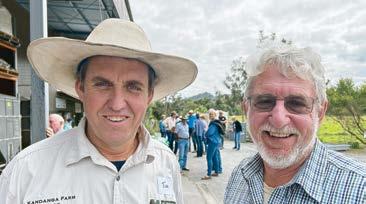

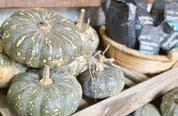
niche ideal for the privileged few.
If these practices are to shape the future of food, they must become mainstream, measurable, and meaningful - not just for farmers, but for consumers and that we eat for nourishment, taste, and for wellbeing.
The program aims to create a model for certified organic, regenerative beef production and decentralised meat processing in a high-rainfall, subtropical environment.
This includes controlled trials for parasite management, soil and pasture interventions, nutrient profiling of beef, and investigation into animal welfare outcomes of on-farm processing.
There will be investigation of community, ecology and economic outcomes.
At present there is no validated, regionally tailored production model for certified organic regenerative beef in high-rainfall Australia.
The innovative, low-impact approach being taken at K2 Organic Beef is an example of how good, clean and fair farming can be both sustainable and forward-thinking.
The Slow Food Farms accreditation team in Italy commented on how the transportation and food
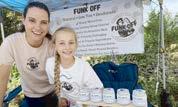
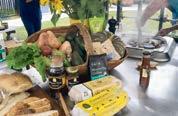
miles strategy was equally impressive, especially considering the Australian context of distance.
They were extremely interested in the research project being undertaken linking soil health, plant diversity, and nutrient density in beef.
“This is very much aligned with some of the work we’re supporting here in Italy.
“Slow Food is advancing a project focused on extensive livestock systems and the value of pastures and grasslands, both from an ecological and nutritional standpoint.
“The collaboration you’re developing with nutritionists, a mycologist, a vet, and even an environmental accountant is fascinating.
“We believe it could provide very meaningful contributions to the broader conversation around regenerative, nutrient-dense food production.’’
Slow Food amplifies the voices of farmers committed to connecting with a global community - including activists, chefs, consumers, food artisans, fishers and fellow farmers.
The Slow Food Farms acknowledgement will enable Tim and Amber to learn more about their passion for growing, sourcing, presenting and appreciating great local food.
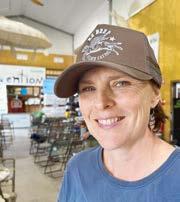
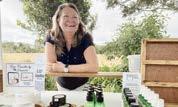
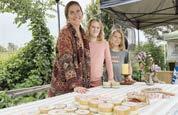
Not only are they inspirational and forwardthinking Slow Food Noosa members but are at the heart of the Kandanga community, providing a centre for information and a hub for agroecology. At the farm store and cafe, people can drop by and make connections with others who have similar outlooks.
“It’s not a trade-off between agriculture and the environment,’’ Amber said. “It’s having both together that makes it better.’’
What the Slow Food Farms recognition shows is that we have farmers in the Mary Valley whose processes are of world standard when it comes to good food, produced fairly and sustainably.
This was done according to criteria that is exacting and verification of what they do … not having to make changes to meet the standards.
It highlights the importance of local food production in terms of food miles, and the future of alternate energy use.
Fundamentally, we are all linked by the need to eat every single day. The quality of what we eat and how it is produced impacts our lives.
Good soil, good food, good health - it’s really quite simple.


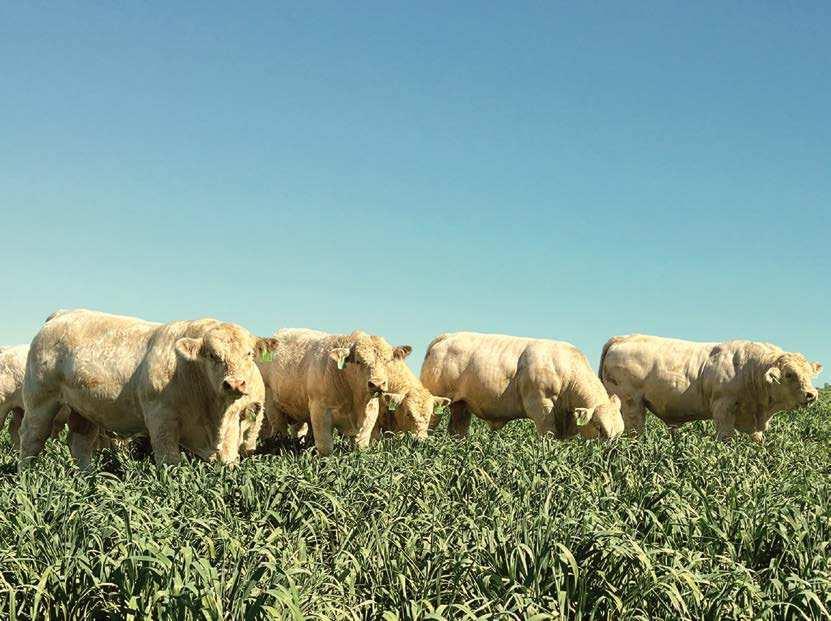

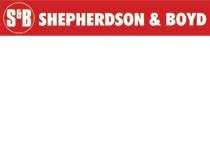

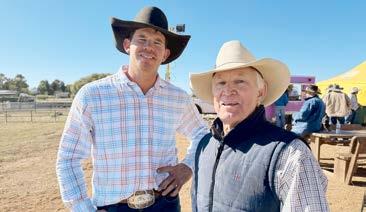
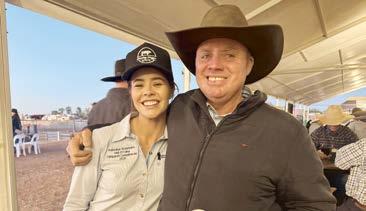
Blessed with perfect weather, the third Australian Stockman’s Hall of Fame Campdraft was held from 6 to 8 June at the ASHOF Campdraft Grounds at Longreach.
Originally this event was to be held the weekend before but with a forecast of 10 to 20mm of rain, and memories of heavy mud in 2024, the committee decided to err on the side of caution and postpone.
Over 200 competitors came from near and far to chase the Wagyus kindly donated by Georgina Pastoral Company. After a runoff with his cousin Leanne Comiskey, Capella competitor Steve Comiskey, riding Hat Fula Jewels was declared the winner of the $30 000 Australian Stockman’s Hall of Fame Open Campdraft.
The dedicated Parents and Friends of the Our Lady’s Catholic Primary School ran the bar and served delicious food all weekend, with the highlight being the spit roast dinner on the Saturday night.
A visiting grey nomad commented on the unique picturesque setting. They were one of the many visitors witnessing campdrafting for the first time. Standing on ‘The Hill’ they watched with interest the horsemanship but also made comment of the incredible variations of trucks and caravans parked around the arena.
And of course, in the fading sun no one could miss the Australian icons, the Qantas Museum, the large windmill standing proudly over the water hole and the Australian Stockman’s Hall of Fame Museum.
This is a special event, and organisers want to extend their thanks to all of the supporters and supporters, without whom none of this could happen.
G to the Facebook page - ASHOF Campdraft for more information on the winner and placegetters.
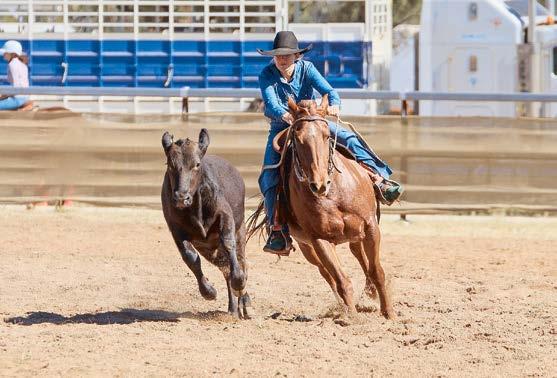
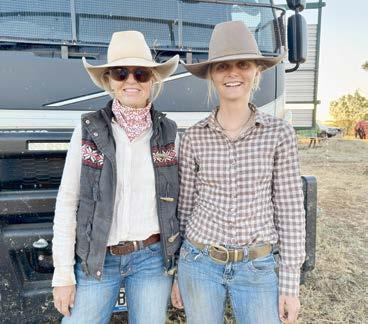
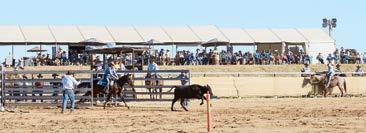





The Bulliac Annual Sale on 26 August will feature 110 Angus Bulls on property at “Wandaloo”, Miles, at 1pm.
Selling agents are Elders.
Online bidding available through Auctions Plus and Stocklive.
“All cattle are reared under commercial conditions – that’s why we say they are ‘The Right Angus’,” said Ben Hill
“The whole reason we are able to make such a
statement is due to client feedback and our own knowledge of how our cow herd perform year after year.
“We could produce and make claims of having the heaviest bulls, highest calving percentage, tightest calving period or highest carcase numbers, by drastically increasing inputs.
“But we believe these factors have little to do with bull longevity or performance in the real world.”
include Including sons of Knowla So Right S48, Millah
Te Mania
Pine
B True North 8052, Sitz
Sitz Tailor
Woodhill Comstock, Sterling Confidence Plus 804, Te Mania Pythagoras P44, Mudeduke Pheasantry S223, Mudeduke Pheasantry S241 & Ellingson Three Rivers.
All sale bulls have been vaccinated 7in1, 3 day, vibrio, blooded and genomics tested including
red gene and defects. Free delivery to purchases within 500km radius of Miles.
Bulls have been semen tested, including morphology and EMA and IMF scanned.
Videos of each lot will be available 2nd week of August, on the Bulliac website, Stocklive and Auctions Plus.
Complimentary refreshments are available.

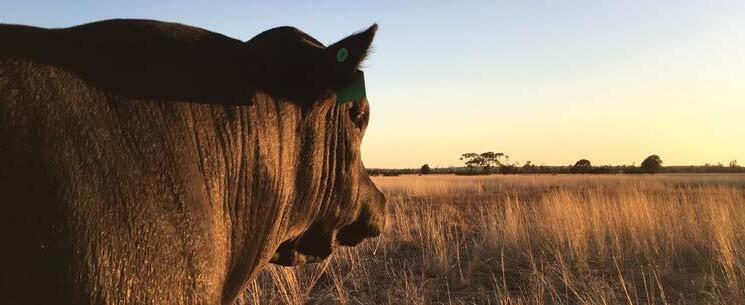


By Jessica McGrath
Regional tertiary students face challenges of distance, but UniSQ wants to hear how learning experiences can be improved.
The University of Southern Queensland stopped by Kingaroy, Dalby, Warwick and Chinchilla from 21 to 25 July as part of their fourth regional listening tour.
Vice-Chancellor Professor Karen Nelson was part of the group which visited Kingaroy on Monday, 21 July.
“This is an opportunity for many of us to come at the same time and hear different perspectives and stimulate different conversations across all of those areas,” she said.
A group of 16 university representatives visited the schools, and chatted with the students about their thoughts on studying at university. The UniSQ group also got a tour of the Kingaroy Hospital.
A luncheon and an evening networking function were held at the Kingaroy RSL so the university representatives could meet with various South Burnett stakeholders such as South Burnett Regional Council, major industries and key employers, as well as UniSQ alumni and current students.
Professor Nelson shared that as the UniSQ Toowoomba campus is the South Burnett’s closest university; they were keen to hear from the region’s residents.
“As the local university for people in this region, we want to better understand their needs and challenges and their expectations of us as a university,” she said.
“In particular we want to know how we can help local communities to remain prosperous and vibrant to retract and retain people to the regions.”
During the tour they ensured they heard from a broad set of views.
“In particular we’re interested in talking with people about how all of those stakeholders, including the university, can come together to create vibrant regional centres,” Professor Nelson said.
This listening tour, which also extends to the regional areas of Chinchilla, Dalby and Warwick, will help inform the team pulling together the university’s new 2026-2030 strategic plan.
“We want to go back to the reason the University of Southern Queensland was founded in the first place and that was to meet the educational needs and to offer local communities and to conduct research and development,” Professor Nelson said.
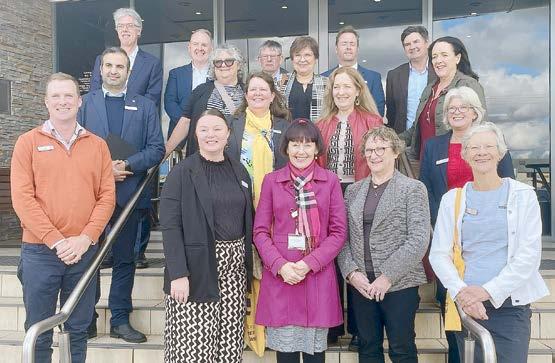
University of Southern Queensland representatives
tour. (Jessica McGrath: 491586)
“We’re having a moment in time to make sure we’re on the right track and to help co-create our new direction with the community that we serve.”
Studying at university can be a challenge for regional and rural students, especially school leavers, who either have to navigate online learning or move out of home to live closer to the campus.
“Regional and rural students really face challenges in relation to the tyranny of distance and being able to experience that full university lifestyle,” Professor Nelson said.
Professor Nelson explained that UniSQ prides itself on its flexibility of learning options to help accommodate these regional students.
“Almost all our programs have all or some of their components available online via distance,”
she said.
“We have a strong reputation as… one of the leading distance learning providers in Australia.”
The Vice-Chancellor acknowledged that some rural students will have different responsibilities that fellow city classmates do not have, like assisting with the farm, business or juggling community roles.
UniSQ also offers flexible learning opportunities within their structured academic calendar, allowing students to study two subjects at a time, and still qualify as a full-time student for government subsidies.
Across the three trimesters, the students can study six subjects in the year and complete a three year degree in four years.
Alternatively they can fast-track their studies with the flexible academic calendar.
“Those sorts of facilities that we offer are really unique, the combination of the flexibility of online and the arrangement of our study periods provides a unique offering that’s attune to the needs of the students in the regional areas,” Professor Nelson said.
The listening tour is part of UniSQ’s engagement initiative, Our Foundations, Our Future, which runs until September 2025.
The program encompasses regional roundtables, staff and student forums, alumni feedback opportunities and an online platform where community members can share their aspirations for the university. To share your feedback visit unisq.edu.au/strategic-plan
By Isabella MacDonald
Ross Green is an emerging artist and fourthgeneration farmer based in Bell, in the Western Downs region.
He grew up in the foothills of the Bunya Mountains on his parents’ cattle and grain property.
A life shaped by the land and its challenges has deeply influenced both his farming and artistic journey.
Mr Green has had an eye for creating his whole life.
From spotting an awkwardly twisted Coolabah branch and crafting it into a lampshade and bending a length of copper wire into a silhouette of two lovers kissing, he has a knack for turning something ordinary into a work of art.
More recently, he has been working on larger, more complicated works. One of his projects has been modifying farm vehicles to create a real-life version of Tow Mater out of the Disney ‘Cars’ movies and Thomas the Tank Engine.
Mr Green’s sculpture, Angels of the Land, marks his debut in the popular Sculptures Outback event, and is the first time he has publicly exhibited his art.
The piece tells a powerful story of resilience, capturing the daily hardships faced by farmers and shining a light on mental health in rural communities.
The past couple of years have been particularly challenging for Mr Green. He has experienced deep personal loss, including the deaths of his father, uncle, and a close friend.
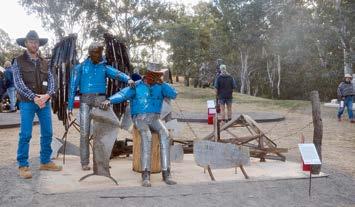
Creating a sculpture with such personal meaning became a healing experience, a way to process grief and pay tribute to the people he loved.
Angels of the Land was inspired by a real event from his family’s farm: a strong wind brought down a windmill during a severe drought and took the fence down with it.
The windmill was the only means of providing water to thirsty livestock.
With Mr Green’s father away harvesting on another property, his mother stepped up, securing the windmill with steel cables until it could be repaired.
This moment of quiet strength became a symbol in his sculpture, one of courage, resilience, and the strength and capability of rural women.
Mr Green paid homage to his parents in the piece. His mother is depicted with angel wings standing over his father, a visual representation
of her unwavering support.
“She was always out there working with him, doing whatever the situation called for,” Mr Green said.
“She was his guardian angel.”
Much of the sculpture was built using tools that belonged to Mr Green’s close friend who died by suicide, a man who had also been a mentor and supporter of his creative efforts.
Mr Green intentionally used his friend’s tools so that he could symbolically have a hand in the work.
When he needs time to process his emotions, Mr Green often drives further west seeking solitude and clarity in the open landscape and the western sunrise and sunsets.
The sculpture took about 400 hours to complete.
His approach to materials is intuitive, he looks at objects for their shape and potential rather than what they are.
Many of the components were salvaged from the family farm, including oil drums, chimney pipes, gas bottle caps, slasher blades, and header parts.
He also used materials significant to his family history, like Coolabah posts that were cut and stood by his great-grandfather over a century ago, and a windmill that once stood over a well on the family property.
Through Angels of the Land, Mr Green shares a story of hardship, legacy, and quiet resilience, a tribute to family, rural strength, and the healing power of art.

By Fiona Gowers
Fairview Black Simmentals will offer 50 “top quality“ Black Simmental composite bulls at its sixth annual sale on Wednesday, 20 August, on-property at Fairview, Mungallala, Queensland.
Each bull, according to stud master Tony Horvath, has been carefully selected for structural soundness, temperament and overall performance.
“We’re especially proud to note that 47 of the 50 bulls are homozygous polled and all are backed by some of the most influential sires in the Simmental breed,“ he said.
Mr Horvath said this year’s sales team had been produced with Fairview’s trademark “commonsense approach“.
It boasts some influential sires that have the unique genetic combination of maternal and fertility traits, as well as performance that is matched with carcase quality.
“Our profit-driven focus to providing commercial-relevant bulls is evident with 80 per cent of bulls being better than breed average for their All Purpose Index,“ Mr Horvath said.
“In all, 86 per cent ranked above-average for weaning weight EPD, 82pc catalogued above breed average for yearling weight while 60pc of the draft are lighter than breed average for their birth weight EPD.
“Also, demonstrating the versatility of the Black Simmental, 82pc of our sale draft ranked better than breed average for their Terminal Index, providing the cattleman with an option for any commercial joining.“
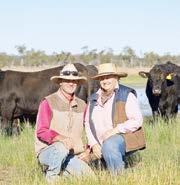
Mr Horvath said a feature of this year’s sale draft was a large offering by WS Proclamation (17 sons), whom he described as “a truly unique individual“.
“His genetic credentials place him among the most elite sires, proven by his multi-trait top EPD rankings,“ he said.
“His sons have topped sales across the United States and his daughters are the envy of cattlemen for their fertility, quiet temperament, broody phenotype and excellent udders.“
Proclamation (now deceased) consistently sires impressive performance, extra volume, good feet and structure, with his progeny bringing added value to the marketplace.
Another sire well represented this year is LBRS Genesis (13 sons). A WS Proclamation son,
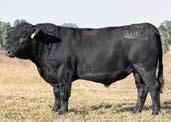
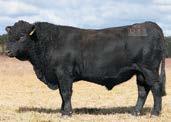
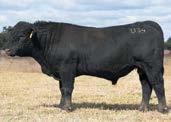
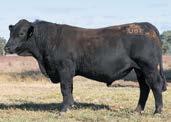

he was the high-selling herd sire standout from the 2020 Bulls of the Big Sky sale offering in the United States. He offers complete fault-free genetics for growth, maternal, carcase and dollar index values. His pedigree is stacked with breedleading, time-tested maternal donors; WS Miss Sugar C4, Hook’s Patti 3P and LBR Night Dream M22. Genesis possesses an appealing phenotype, exceptional hoof quality and structural integrity.
BBS True Justice B10 is represented by nine sons. According to Mr Horvath, he offers calving ease and growth in the one package. A slickcoated, free-moving bull with excellent phenotype that is backed by maternal excellence.
His dam BBS Miss Justice has earned her stripes as a prolific donor with high stayability EPD. She sits in the top one per cent of the breed for her milk and maternal weaning weight EPD.
Other successful sires represented include LFE The Riddler (five sons), Woonallee Legacy (three sons) and Woonallee Pharaoh (two sons).
Mr Horvath said Fairview’s sale bulls had been prepared with longevity in mind.
After weaning they have been grown out on grass and run as a large contemporary group, only receiving hay in the paddock for a short period prior to sale.
“We strive to take the guess work and assumption out of purchasing a Fairview bull,“ Mr Horvath said.
“We present our bulls in ready-to-work condition, showing enough growth and muscle expression to do their genetics justice.“
Fairview Black Simmental bulls have undergone extensive measuring and weighing throughout their lives, as well as pre-sale semen
and morphology testing.
Sale weights and supplementary pre-sale fat and muscle scanning are also done, as well as all bulls undergoing a comprehensive vaccination program. With the combination of phenotypical raw data, IGS technology and Genomic enhanced EPDs, all coupled with structural soundness, clients are well informed to make selections on sale day, based on their individual breeding programs and target markets.
“At Fairview we understand that our role as a seedstock producer comes with a lot of responsibility,“ Mr Horvath said.
“We have long held the belief that a successful beef breeding operation is built around durable females that have fertility, milking ability, good dispositions and longevity.
“Our females must be able to produce and wean an exceptional calf on an annual basis and to also demonstrate efficiency on grass.
“It’s these cows that make a positive impact on our breeding program and it’s from these cows that the best new generation heifers and bulls are retained.
“We believe generational turnover is vital to accelerating genetic progress and we expect our heifers to produce right up there with their mothers and to continue to improve as they mature.
“The key to achieving this is getting them mated right and using the best predictable sires that are available.“
* Fairview Black Simmentals will offer 50 Black Simmental composite bulls at its 2025 bull sale on Wednesday, 20 August, on-property at Fairview, Mungallala, Queensland.
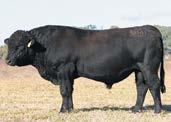
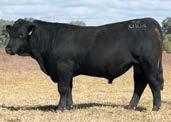
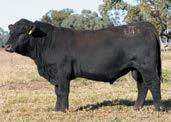
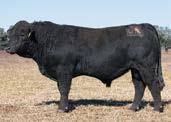


By Aussie Pumps Australia
Who can deny that climate change is having a direct impact on Australia?
The most recent ABARES report indicates a forecast of a $2.6 billion shortfall to $90.7 billion in the 2025/2026 agricultural production.
Although it’s the third highest result, the effect of the floods and drought cannot be ignored!
Aussie Pumps have worked hard to develop products to alleviate the issues created by climate change.
One indication is the development of their huge 6” trailer-mounted flood lifter pumps, designed for major flood relief projects.
The company is proud to have built four heavy duty 80 horsepower units for a central Queensland local government body, to provide them with the ability to move up to 24,000 litres per minute of flood water.
The basis of the Aussie MQ600TD is a huge cast iron self-priming body designed with an integrated priming tank.
That priming tank enables fast self-priming and positive suction even from vertical depths of up to 7.6 metres.
The self-priming function is a matter of minutes as the primed pump expels the water from the pump body and creates a vacuum.
That automatically primes the pump, drawing water up from a vertical lift of 7.6 metres.
The MQ600TD 6” trash pump also features a built-in front-mounted clean out port that enables the pump internals to be cleared of blockages without the need to disconnect pipe work.
The base contains a 152-litre fuel tank. The diesel tank allows the pump to run for up to 11 hours continuously, without refueling.
26 of these big 6” pumps are currently operating in the South Sudan. Their job there is to protect the city of Juba from the annual equatorial floods brought on by the monsoon system.
“We’ve been working with the United Nations on supporting the South Sudan government and these big pumps do a mighty job to redirect the Nile River around the city of Juba, instead of through it,” said Aussie Pumps’ Chief Engineer, John Hales.
“The company believes that governments can’t continue to ignore the fundamental importance of clean water, effective sanitation and sustainable infrastructure to support community health and well-being.”
By that we mean the best action on flood mitigation precautions but also the clean up process.
Aussie’s Cobra drain cleaning Jetters are an obvious solution for local government, with the big Python pump producing 31 litres per minute and over 4,000 psi. It’s capable of quickly cleaning blocked drains and sewer lines.
The Python is powered by Honda’s new high tech IGX800 engine and can be supplied either as trolley (base mount bracket for installation on support vehicles) or trailer mount. 5,000 psi machines are also available from Aussie’s extensive range.
“Clearing up after floods is the high priority, particularly when sewage stations have been flooded with resulting massive potential health problems for the community,” said Hales. Great Dealer Support
Typical of the excellent support and service that Aussie’s Gold Distributor network delivers is Texas Pumping & Irrigation.
This highly specialized company is proud of supplying Aussie’s range of high-pressure water blasters, drain cleaning Jetters, and the complete pump range.
Mike Brown and his team are proud to represent Australian Pump Industries and are happy to facilitate the free training courses offered by the company to farmers, tradesmen, or even local government bodies.
It’s a simple philosophy, but it’s one that works with the result that Aussie Pumps continues to grow through its great distributors throughout Australia and its international network where they help to defeat fires, floods, and drought.
For more information about the highest quality and greatest range of high-pressure water Jetters and heavy-duty industrial pumps on the market, please visit aussiepumps.com.au, email info@aussiepumps.com or call (02) 8865 3500.
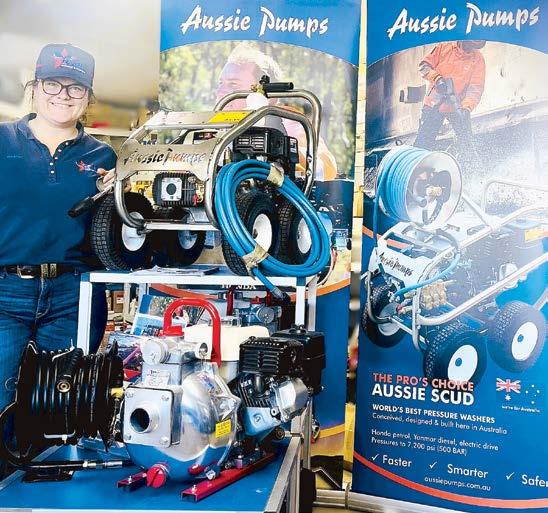
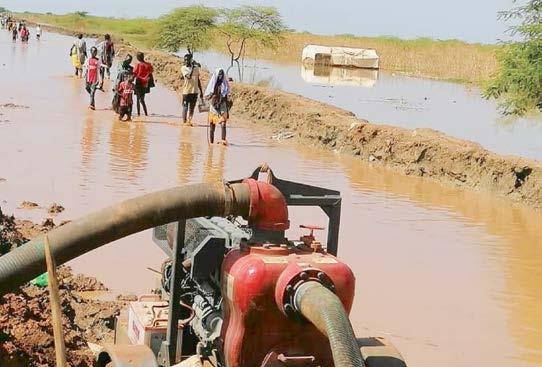

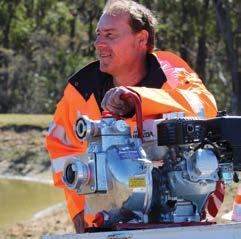
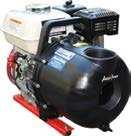



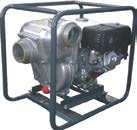
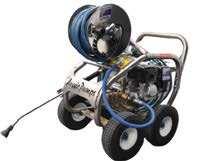


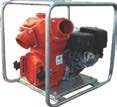
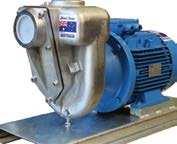

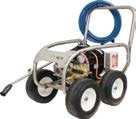


On 28th August Talbalba will host its 9th annual on-property sale. Steve Reid’s Grandfather started the Bundarra stud in 1953 and it was taken on by Jim in the early 70’s just as the beef depression started to bite. Steve started the Talbalba stud in the early 1980’s and then purchased the Bundarra herd in 2004, as Jim’s health declined.
Next Gen: Stud principal, Steve Reid says “We are excited to see the fourth generation seeing a future in agriculture and in the line of cattle we have been moulding for over 70 years. Kate has returned home after working for AACo and Palgrove where she was part of the genetics leadership teams and we look forward to her knowledge and energy driving our business onto the future.”
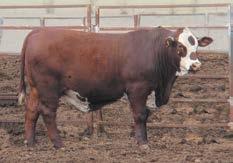
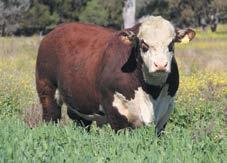
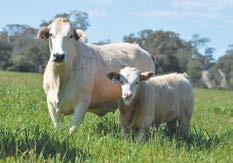
“Herefords
Hereford cross adds Weight:
e Reid family believe Herefords have an important role to play particularly in grass fed production systems across Australia and excel in the crossbred arena adding early weight gain making them a great choice for sustainable beef production. Hereford and Hereford cross cattle convert feed e ciently, grow rapidly and nish well with the added bonus of increasing MSA compliance. Talbalba bulls are reared on pasture, oats prepared for sale and will present with excellent weight for age and positive carcase traits.
Hereford cross adds Fertility:
Fertility is the no 1 pro t driver in any beef herd. At Talbalba fertility is key, we join our females as yearlings and expect them to rebreed as 2 year olds with very few falling out of the system. Due to the amount of pressure we put on our female herd , we see it only t that our male portion are judged the same. We have been semen motility testing our sale bulls for 15 years. In 2017 we started morphology testing as we realise that if a bull doesn’t perform he is no good to anyone regardless of his genetics and phenotype. We then started sharing this data with our clients for further transparency.
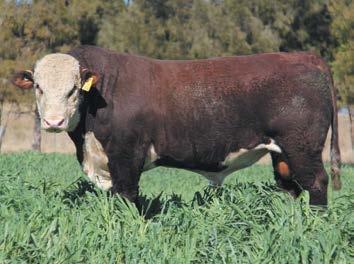
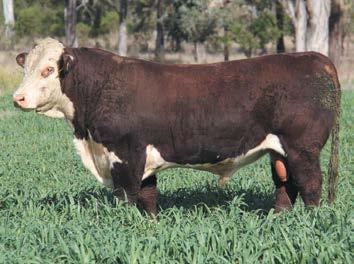
We have a strong group of bulls to present this year with high growth and carcase, and particularly strong tops. e bulls on o er are very even from Lot 1 to Lot 75 with exceptional temperament. Talbalba bulls o er an excellent blend of phenotype backed up by consistent data. We have been performance recording data with Breedplan for the past 50 years. Both carcase and fertility data are available on all sires including days to calving interval. We welcome inspections anytime.

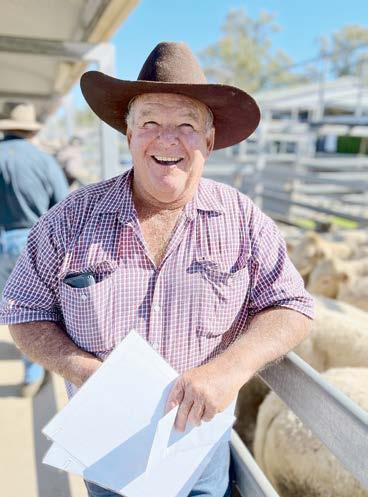
By Fiona Gowers
Over the past six years, Brian Conroy has been buying top-tier ANC Charolais bulls and using them to enhance his Brahman and Santa-cross breeders.
The result? Exceptionally high-performing, award-winning weaners that consistently top market benchmarks.
Mr Conroy, a veteran cattle breeder of Mountview Pastoral Co, Bryden has established a simple strategic terminal cross system that sees 800 weaners sold annually - mostly to return buyers - at Silverdale sale.
“I went out to ANC because I was chasing full French bulls,“ he said. “I was a bit worried about the direction some of the Charolais breeders were heading.
“But I’ve found the ANC bulls are well-muscled, good broad-headed calves, sound temperament and bone structure and heavily muscled. And, they consistently pass those traits on to their calves.
“I’m certainly going back to their on-farm sale this year where I normally buy about four bulls.
“Andrew and Norah (of ANC) have always been a delight to deal with, I can’t talk highly enough of them and they deliver pretty well close to home for me.“
Why Charolais-cross Brahman works?
Research shows that Charolais bulls contribute significant hybrid vigor when crossed with Bos indicus breeds such as Brahman.
A classic study in Oklahoma compared Charolais-sired calves from Brahman-cross dams, finding Charolais progeny gained 0.141 kilogram per day more, weighing on average 41kg heavier at slaughter and delivering substantially better carcass traits.

Another economic analysis emphasised this advantage: crossing Charolais over Brahman cows increased carcass weight by about 60 kg— translating to roughly A$180 extra per head.
Other upsides:
Carcass Quality: Offspring display improved muscle depth, leaner carcasses and reduced finishing times — hallmarks identified in crossbreed studies.
Commercial recognition:
Each year, Mr Conroy’s cattle have won accolades at local agricultural shows and saleyards, praised for superior conformation, consistent weights and on-point frame sizes.
Judges and buyers regularly note the “clean, muscular appearance and strong growth patterns” typical of Charolais terminal-cross weaners.
The bottom line:
By sourcing ANC Charolais bulls over the past six years, Mr Conroy has harnessed consistent, repeatable genetic gains. Beyond strong weaning weights, the program delivers:
• Enhanced feed conversion and carcass yield
• Faster maturity and better market timing, and
• Strong weaner demand and premium pricing.
With each season, the program builds on the last — solidifying a reputation for producing high-demand weaners.
This success story out of Bryden highlights the powerful synergy between quality Charolais genetics and Brahman-cross cows.
Backed by scientific research and market feedback, Mr Conroy’s simple strategy delivers both performance and profit — and is a blueprint for others seeking terminal cross success in northern beef systems.
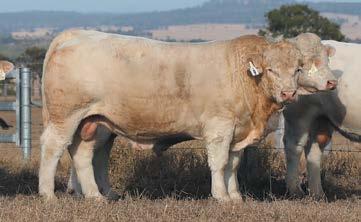
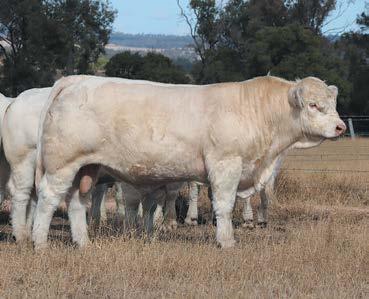

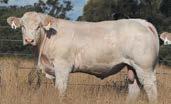
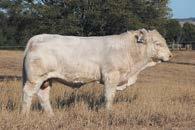

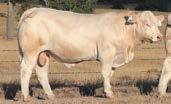
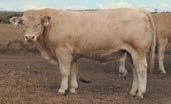
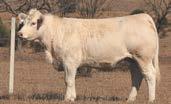

By John Metelli, QRIDA Regional Area Manager For Capricornia
Central Queensland beef producers are busy preparing for the bull sale season, with many stud cattle sales getting underway this spring.
While global demand for Australian beef is strong, producers will be keeping a keen eye on the weather as well as cattle trends and prices over the next few months to determine how competitive the bidding will be.
Whether they are planning to sell their bulls or build their herd, what producers can know for certain are the key steps they can take to best prepare for this upcoming sale season.
Continue reading to find out my top three tips for both sellers and buyers.
Here are my top three tips for sellers:
1. Ensure your bulls are healthy, fertile and in good physical condition. This might include:
• Tailored feeding and nutrition
• Veterinary checks and vaccinations against relevant diseases
• Grooming such as clipping, trimming and enhancing coat shine.
2. Ensure your property has the necessary onfarm infrastructure to keep your bulls in top condition for the sales.
QRIDA’s concessional First Start and Sustainability Loans can help you construct fodder storage facilities, build water infrastructure and implement biosecurity measures.
3. Prepare your marketing. Create and implement a marketing plan that identifies your target audience, highlights your bulls’ strengths to potential buyers, includes relevant media platforms and is informed by research and analytics.
Here are my top three tips for buyers:
1. Determine your breeding objectives. Assess the strengths and weaknesses of your current

herd and research what additional bull traits would help you achieve your breeding goals for your target markets.
2. Plan your budget and take advantage of any financial assistance for bull purchases. QRIDA’s concessional First Start and Sustainability
Loans can help Queensland primary producers build their herds.
3. Ensure your yards and paddocks are ready for new bulls and you have feed, water and adequate space. QRIDA’s First Start and Sustainability Loans can help you improve your
It is an irrefutable matter of science that Agricul ture, Forestry and Land Use Change contributes to carbon sequestration and emits greenhouse gas emissions.
In recognising this, the Food and Agricultur al Organisation (FAO) developed the EX-Ante Carbon Balance Tool (EX-ACT) as an internationally recognised tool for estimating this at property level.

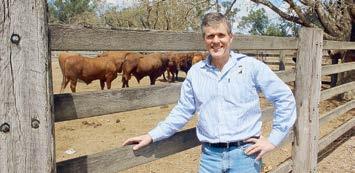
Augmenting this international framework is important in Australia, as is recognising our unique landscapes to ensure our story is recognised and respected around the world.


Why then are we in Australia even considering a draft Carbon Farming method known as the Improved Avoided Clearing of Native
Regrowth (IACNR) Carbon Farming Initiative (CFI), as proposed by the previous Queensland State Government?
and property expansions. Get in touch with me on 1800 623 946 to chat more about how QRIDA’s financial assistance could help you prepare for the bull sale season.
Not only is this counterproductive to improved climate and environmental outcomes and food security - but it also is not in line with the international standard - so Australia would be left stranded as an exporter of food.
AgForce is working hard to ensure the Federal Government’s Emissions Reduction Assurance Committee (ERAC) recognises the woeful inadequacies and serious manifestations of the IACNR method and has it thrown in the bin.
The opportunity here is that we instead pick up the EX-ACT model, augment it with the realities of the Australian landscapes and production methods and then we will have a world-leading framework that gives confidence in investment and a powerful underpinning for communities across Australia.
The 48th Federal Parliament is promising fundamental reform – using that intent to underpin food security and environment is where our greatest opportunity lies. AgForce is ready to roll up its sleeves and be a part of that solution.
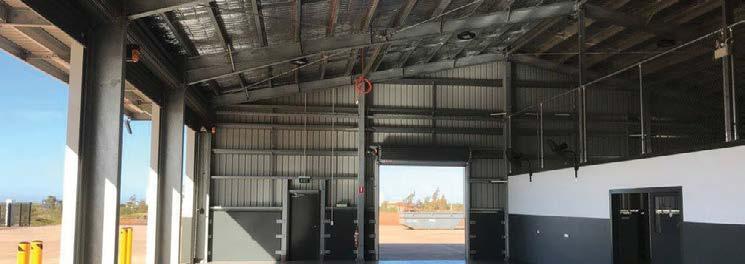

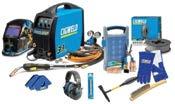

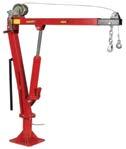
-$2565X10 -$80 40X3 -$1875X5 -$70
-$2575X6 -$60
-$3075X8 -$80 40X8 -$4075X10 -$100 40X10 -$5075X12 -$120 50X3 -$25100X6 -$80 50X5 -$30100X8 -$100
PLATEHEAVY-2400X1200
1.6MM -$125 8MM-$600
2.0MM -$150 10MM-$760
3.0MM -$230 12MM-$900
4.0MM -$300 16MM-$1300
5.0MM -$380 20MM-$1600 6.0MM -$460 25MM-$200
U-BEAM-12M
•150UB14- $500 •200UB29 - $1000
•150UB18- $650 •250UB25 - $920
•180UB16- $570 •250UB31 - $1100
•180UB18- $650 •250UB37 - $1300
•180UB22- $800 •310UB32 - $1100
•200UB18- $650 •310UB40 - $1450 •200UB22- $800 •310UB46 - $1650 •200UB25- $920 •360UB44 - $1600 STEELPLATE
•1.2MX2.2M
•8RAIL -GRADUATED
•2.5MMOD -GALVPIPE
•PINSINCLUDED PACKBUYS-93 -$90EA LOOSEBUYS -$100EA
•GOATPANELGATE -$250 GATES-GALV
•10’-3M -MESH -$120
•12’-3.6M -MESH -$140
•14’-4.2M -MESH -$160
•10’-3M -5BARLIGHT -$140
•12’-3.6M -5BARLIGHT -$160
•14’-4.2M -5BARLIGHT -$190
•12’-3.6M -5BARHEAVY -$180
•14’-4.2M -5BARHEAVY -$210 BARBEDWIRE
•2.5MM-IOWA-400MROLLS
PALLETBUYS-27ROLLS -$125EA
SINGLEROLLS -$135EA
•1.8MM-HIT-500MROLLS
PALLETBUYS-36ROLLS -$115EA
SINGLEROLLS -$125EA
FENCEPOSTSPICKETS
•165CM-5’6”BLACK-HEAVY -$7.50
•180CM-6’BLACK-HEAVY -$8.50
•180CM-6’HDG-HEAVY -$9.00
PRICEBASEDONBUNDLESONLY CATTLECABLE
•8.2MM-7STRANDGALV
•400MX150KG -$550
HINGEDJOINT/FIELDFENCEFIXEDKNOT CATTLEGRIDHEAVY
•4MX2M-800KG -$2700
CONCRETEABUTMENTS
•4M-3000KG/PAIR -$1800
GALVGRIPMESHWALKWAY
•3000X600 -$200
•3000X750 -$220
BLACK POWDERCOATED RHSSQUARETUBE
•75X75X3
•3M/LENS
$45/LEN 200-IN-STOCK STRAINERPOSTS
•2.4M- 80NBX4MM-GALV -$65
•3M- 80NBX4MM-GALV -$75
•2.4M- 80NBX4MM-BLACK -$60
•2.9M- 80NBX5MM-PTD -$70
•3M- 80NBX5MM-PTD -$75 BUNDLES19LENSONLY BLACKRUSTY
366-3100MM-40NBX3.2MM -$22 BUNDLES-61-ONLY PIPE-NEAR-NEW $/LEN
231- 6.5M-20NB-MGPE -$18 STEEL PLATE-NEARNEW
•2400X1200X1.6 -$120
•3000X1500X2 -$110
•3000X1500X3 -$260
•3000X1500X6
GALV.PIPEMEDIUM
•65NB-76MMODX3.6MM
•6.5MLEN/37-BUNDLE $70CHEAPERTHAN5ONB

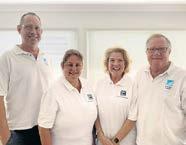
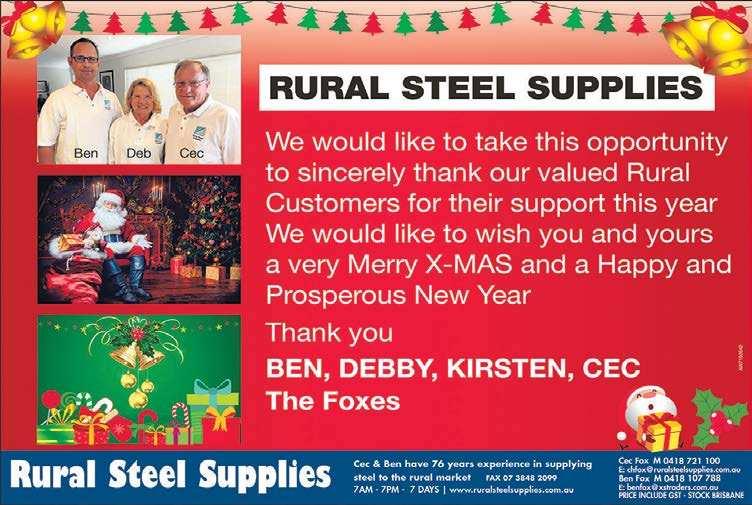
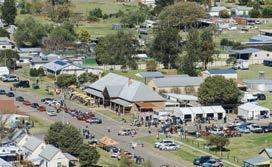
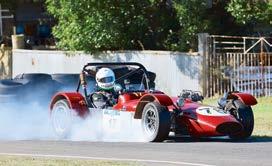
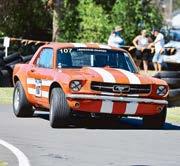
The Historic Leyburn Sprints are set to be one of Queensland’s biggest annual motorsport events with a record 260 historic, classic and performance cars set to contest the 29th edition on 2324 August.
Overwhelming interest after last year’s street Sprints, which celebrated the 75th anniversary of the Leyburn Australian Grand Prix, has drawn a fresh flood of entries ranging from classic Le Mans-type Ferraris and Jaguars and modern supercars to Aussie tin-tops and even a 101-yearold French Amilcar.
A highlight will be the appearance of Queensland’s own supercar, the rare Giocattolo Group B.
In 2024, the community-run Sprints accepted 240 entries, drew record attendance of 18,000 and was judged Queensland Motorsport Event of the Year by Motorsport Australia. Sprints President Tricia Chant said the momentum of that event has boosted interest for this year.
“It’s amazing even more cars have come out of their sheds this year. No other Queensland motor-racing event attracts as many competitors or the incredible variety of cars that Leyburn does,” Mrs Chant said.
Visitors to the tiny Southern Downs town –usual population around 350 - this year can expect plenty of high-octane action on-track, with time trials on the 1.0 km closed-street course from 8am on both days, and a packed menu of off-track entertainment.
Several famous former drivers will attend as VIP guests, including Queensland 150 Icon Dick Johnson and 1977 Australian Grand Prix winner Warwick Brown. The 1949 winner’s trophy will be displayed for the first time in more than 20 years, alongside three original Leyburn grand prix cars and two associated with Formula One World
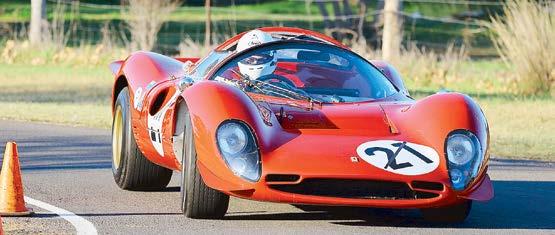
Champion Sir Jack Brabham.
A new Vintage Van Village featuring colourful restored caravans, a Show and Shine, charity auction, fun run, market stalls, live music at three venues and helicopter and race-car rides will add to the fun. The night-time atmosphere will be enlivened by an expected 5000 campers.
Cars will contest the Sprints in 59 classes, with strong interest in whether nine-time outright champion Dean Amos can extend his existing record tally and other trophies for the fastest Historic driver and Junior challenge winner.
For the first time, the entry list spans 100 years. It features everything from the obscure to the iconic, giving fans a chance to see in action cars such as the Jaguar D-Type, Jaguar XJ13 and Ferrari P4 – all replicas – 1933 Aston Martin Le Mans, 1988 Nissan Skyline HR31 GTR and 1988 Giocattolo Group B.
“It’s all about giving our visitors a wonderful day out, whether they’re diehard car fans or a family looking for a bit of fun that won’t break the bank,” Mrs Chant said.
Fans who want even more motorsport can en-
ter the Sprints’ on-line raffle to win a Gold Coast 500 Supercars weekend for two, including VIP champagne hospitality tickets and four nights’ accommodation, or five runner-up prizes of $500 Supercheap Auto vouchers. Raffle tickets are for sale at https://www.raffletix.com.au/leyburnboostraffle2025.
Adult ticket prices are $30 per day or $40 for the weekend – available at the gate or pre-event on-line - while accompanied children under 14 enter free. Street parking is free and food and drink prices at community-run outlets are set at affordable levels.
No matter how experienced you are or what you’ve got to record video on, the Royal Flying Doctor Service want you to share what life in your part of Queensland is all about, and for your efforts, you’ll be in with a chance to win $10,000.
The Outback Explorer Competition is back, asking Queenslanders from the far corners of the state to showcase their communities and those who live in them.
Royal Flying Doctor Service (Queensland Section) (RFDS) CEO Meredith Staib said it’s about celebrating what makes our regional lifestyle unique and encouraging everyday Queenslanders to tell their stories.
“This is a fantastic initiative for people to get creative and share a glimpse into life in regional, rural and remote Queensland,” Meredith said.
“Living in rural and remote Queensland is a far different existence to life in Queensland’s larger centres.
“We want to see everything from school runs to station life, morning routines to community gatherings.
“It’s about celebrating what makes your slice of Queensland special.”
Elders has once again thrown its support behind the Outback Explorer Competition, joining forces with the RFDS to help highlight the unique spirit of life in rural and remote Queensland.
“At Elders, we’re passionate about supporting the people who make our regional commu-
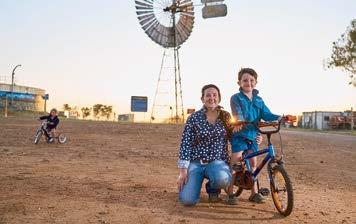
nities thrive and are proud to partner with the RFDS (Queensland Section) on the Outback Explorer Competition to help shine a light on the stories behind life in the bush,” said Lisa Hewitt, Elders QLD/NT State General Manager.
“We’re looking forward to seeing the creativity and pride Queenslanders will showcase as they bring their communities to life through this campaign.”
While the overall winner will receive $10,000 courtesy of Elders, there’s also three runner-up prizes of $1,000 each and one lucky entrant will be the recipient of a Premium Adventurer Rescue Swag.
The Outback Explorer Competition runs from 15 July to 26 August with all videos to con-

Share your experience for a chance to win the competition.
tain the Outback Explorer Competition sticker for the duration of the video, which is available to download on the competition website.
Videos can be posted to Instagram, YouTube, or TikTok.
For further information on how you can get involved and go in the draw for the massive $10,000 winner’s cheque, go to outbackexplorercompetition.com
A panel of judges will determine the winner, with a public vote deciding the three runners up, so the more videos are shared, the more chances of winning.
So, what are you waiting for? Grab your phone, capture your video, put it together, and submit the day in your life.

OnSaturday,16August,2025,theruralheartbeat of the Gympie region will again pulse strongly as the second annual Woolooga Droughtmaster Bull and Female sale returns to the Woolooga saleyards.
Offering 55 registered droughtmaster bulls and 20 registered females, with quality lines of vendor-bred commercial heifers to follow the registered cattle.
This highly anticipated event is fast becoming a cornerstone in Queensland’s cattle calendar, showcasing the resilience, innovation and community spirit that defines our beef industry.
Following the success of last year’s inaugural sale, this year’s offering promises even greater depth in quality and pedigree.
Vendors from across the Wide Bay-Burnett and beyond are bringing forward a draft of Droughtmaster bulls and females bred for performance, adaptability and fertility — traits essential for northern Australia’s diverse and often challenging environments.
All bulls have been semen-tested and vaccinated for 3 day and 3 germ blood. Buyers and spectators alike can expect not only top-tier cattle but also a strong sense of camaraderie and connection — a hallmark of rural Queensland.
As markets remain buoyed by sustained demand for quality beef and breeders continue to invest in future-focused genetics, the Woolooga Droughtmaster sale arrives at a time of opportunity and optimism.
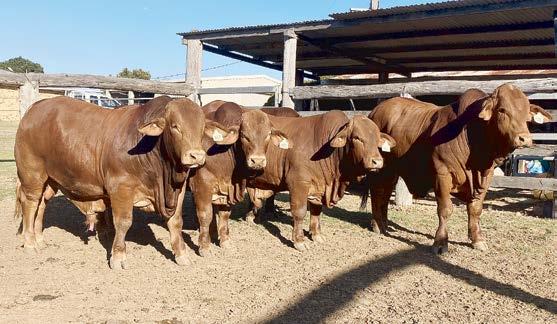
Whether you’re a seasoned stud breeder, a commercial grazier or a newcomer to the industry, this sale offers something of value —both in the paddock and in the partnerships it fosters.

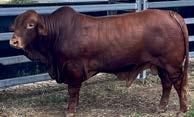
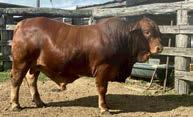
We tip our hats to the vendors, agents and organisers who make this event possible and we look forward to seeing
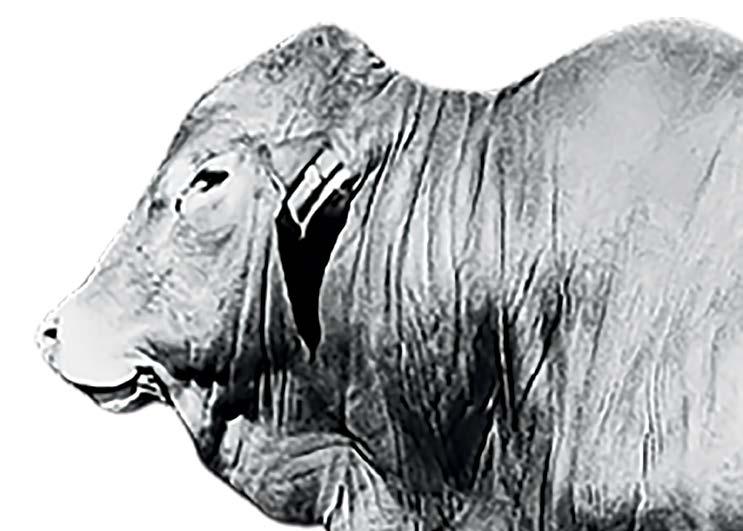




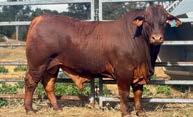

Prep time: 7 mins
Cook time: 8 mins
Serves: 4 individual waffles
Ingredients:
· 2 rashers rindless middle bacon
· 9 eggs
· 3 tablespoons milk
Method:
1. Preheat waffle maker. Wait for the green READY light to go on.
2. Place bacon rashers in waffle maker. Cook for 2-3 minutes or until browned and crisp. Transfer to a board. Finely chop. Reserve 2 tablespoons.
3. Meanwhile, whisk 5 eggs, milk and cheese together in a jug. Season with salt and pepper. Poach remaining 4 eggs.
4. Reheat waffle maker. Wait
· ¼ cup finely grated parmesan cheese, plus extra shaved parmesan, to serve
· ½ cup shredded cooked chicken
· 2 baby cos lettuces, leaves separated
· ½ cup Caesar dressing
for the green READY light to go on. Scatter chicken and bacon over base of waffle machine. Pour over egg mixture.
5. Close lid and cook for 5 minutes or until set. Carefully remove waffle omelettes from waffle maker. Divide waffle omelettes among plates. Top waffles with poached eggs. Serve with lettuce leaves drizzled with dressing and sprinkled with shaved parmesan and reserved bacon.
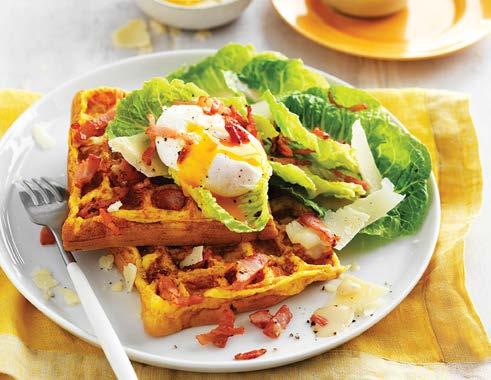

Prep time: 15 mins
Cook time: 40 mins
Serves: 12
Ingredients:
· 3 zucchinis, grated
· 1 onion, finely chopped
· 200g rindless shortcut bacon, finely diced
· 1 ½ cup (150g) grated cheddar cheese
· 1 cup (150g) self-raising flour
· 3 tbsp olive oil
· 7 eggs
· Salt and pepper
· ½ cup (120g) smooth ricotta
· 6 cherry tomatoes, halved
Method:
1. Preheat oven 180°C/160°C (fan-forced) and grease and line a 30 x 20cm (base measurement) pan with baking paper.
2. Combine grated zucchini, onion, bacon, cheese and flour.
3. Whisk oil and eggs together and stir into flour mixture. Season with salt and pepper.
4. Pour into prepared pan and smooth the surface. Dollop tbsp. of ricotta and arrange cherry tomatoes over the top. Bake 35-40 minutes or until top is golden. Serve warm or cold.
Tips:
· Zucchini slice will keep refrigerated for 2-3 days in a sealed container.
· Reheat in microwave or in a low oven.
· Freeze portions separately and add to lunch boxes.
· For a vegetarian version, omit bacon and add sliced mushrooms.
Recipe courtesy of Australian Eggs



Previously known as the Coolabunia Limousin sale, the event has recently been rebranded as the Top Shelf Limousin Bull and Female Sale and will continue to offer top quality industry relevant Limousin genetics.
The fourth annual sale includes an impressive draft of bulls and an elite line of females from leading Limousin studs across QLD, NSW and SA.
The sale will be held on Saturday, 16 August at the Nanango Showgrounds, with the auction to commence at 10am.
On offer will be 30 polled apricot, red and black bulls.
Two-thirds of the sale draft are homozygous polled.
This year’s sale will also include an elite line of eight registered polled apricot, red and black heifers, including several that junior competitors successfully showed at the recent Limousin National Junior Heifer Show.
Vendors for this year’s sale include Brentvale Limousins, Fernvale Limousin Stud, Kalara Livestock, McAlpin Livestock, Provenance Limousin Stud, Silverleaf Livestock and Summit Livestock.
This year’s sale will be conducted by Gilliland Livestock Marketing and Nutrien Ag Solutions Kingaroy and will be interfaced live through the Stocklive online platform.
Similar to previous years, the Top Shelf Limousin Sale will offer free freight to all Queensland selling centres.
All sale lots have been fully vaccinated and vet checked. All bulls have also been semen motility and morphology tested so you can buy with confidence.

Pre-sale inspections are welcome and can be organised through the selling agents or with the vendors. All sale lots will be available for inspection at the Nanango Showgrounds from 2pm on Thursday, 14 August.
The Top Shelf Sale Group welcome past and prospective buyers to join them for the annual Bull and Female Walk at 3pm on Friday, 15 August at the Nanango Showgrounds.
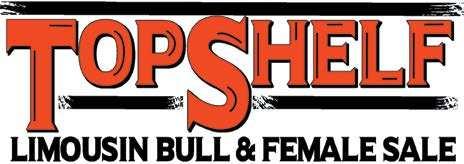
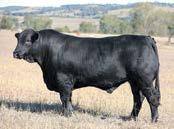
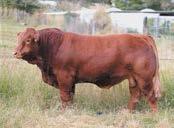

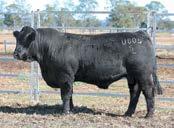

All sale lots will be on display and it provides a great opportunity to inspect the sale lots in a relaxed environment, chat with each of the vendors and enjoy some light refreshments.







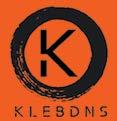
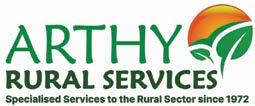

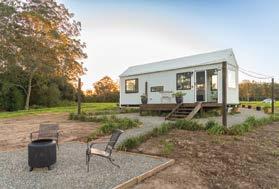
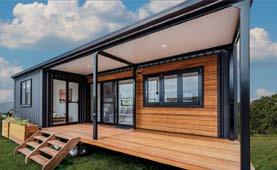


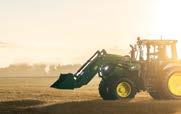


Cunnamulla Multi-Vendor Dorper & White Dorper Sale
Friday 22nd August 2025 Cunnamulla Showgrounds Inspections from 10am sale 12 noon
By D. McIntosh (DesignsByDM)
The Cunnamulla Showgrounds on Friday, 22 August 2025 (Inspection 10 am, Sale begins 12 pm) will host the much-anticipated Cunnamulla Multi-Vendor Dorper and White Dorper Sale, featuring 56 White Dorper rams and 34 Dorper rams from six of the country’s top female stud breeders. This diverse, high-quality draft presents an ideal entry point for both commercial and stud producers.
These breeds are Australia’s leading lowmaintenance meat sheep.
They thrive in the harshest climates, and produce fast-growing, well-muscled lambs with excellent carcass quality.
With contributions from Nomuula, Kerrigundi, Bensons, Vantablack, Basecamp & Melete studs, this sale offers exceptional genetic diversity, carefully selected for structure, fertility, and growth rate.
Rams combine adaptability and hardiness with the breed’s hallmark meat production, offering producers confidence in consistent performance across varied environments.
For breeders seeking to lift flock profitability, Dorper genetics deliver a winning trifecta: resilience, rapid weight gain, and easily marketable carcasses.
All vendors will be donating $50 per ram directly to farmers in need, especially those affected by recent floods. Catering available at venue.
As the season nears, Cunnamulla’s event stands out as a “must-attend” for producers serious about performance.
With investment in quality and performance genetics today, growth and proven results are leading to dollar returns to your business.
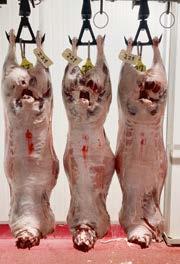
Buyers can secure elite rams designed to thrive in Australia’s demanding pastoral systems.
Mark your calendars—these genetics are too good to miss.
Can’t make it in person, no problem, the sale will be available online through the Stocklive platform (www.stocklive.com.au).
Make sure you register to bid 24 hours before the sale begins.

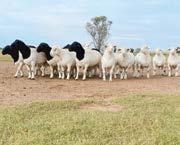
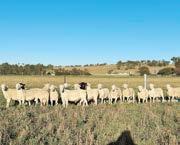
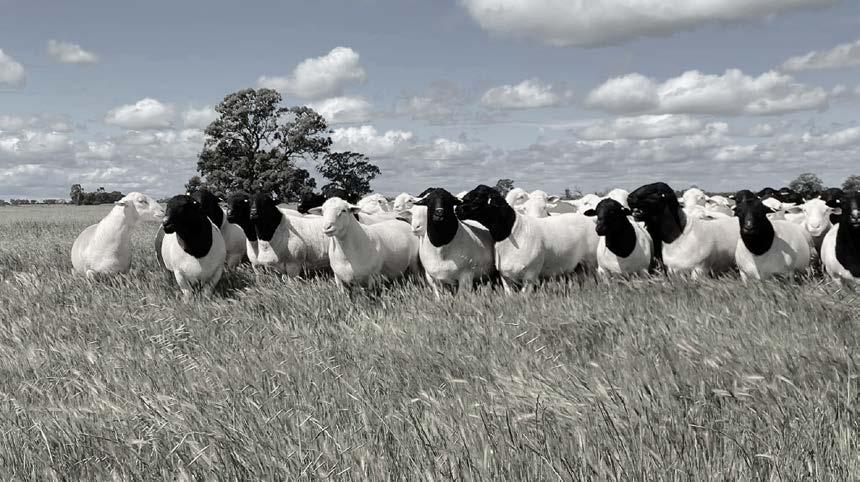





CATTLE Report Date: 10/07/2025
Saleyard: Blackall
Blackall Agents yarded 2,733 head. All the regular processors feedlotters and backgrounders present with 1 extra southern buyer present. The market was solid for most categories but cows sold to dearer trend. Yearling steers 200 to 280kg selling to 406c/kg. Yearling steers 280 to 350kg topped at 330c/kg. Yearling steers 350 to 400kg sold to 360c to average 288c/kg. Yearling steers 400 to 480kg sold from 358c to 370c/kg. Yearling steers over 480kg to 360c/kg. Yearling heifers under 200kg with the majority selling to 284c/kg. Yearling heifers 200 to 280kg sold from 208c to 284c/ kg. Yearling heifers 280 to 330kg with the majority selling from 220c to 334c/kg. Yearling heifers 330 to 400kg topped 340c to average 308c/kg. Grown steers 400 to 500kg made to 370c/kg. Grown steers 500 to 600kg sold to 355c/kg. Grown steers over 600kg selling from 302c to 328c/kg to processors. Grown heifers over 540kg with the majority selling from 250c to 328c/kg for the better pens. A large yarding of prime cows which sold to a dearer trend. Cows 400 to 500kg made to 302c/ kg to processors. The 3 score cows over 520kg topping at 331c/kg. Also a large yarding of bulls penned including bulls 450 to 600kg to 290c/kg. Bulls over 600kg to 288c/kg to processors. Cows & calves sold from $1400/unit to $1675/unit Market Reporter David Friend.
Report Date: 23/07/2025
Saleyard: Casino
There was a smaller yarding of 834 head, consisting mainly of weaners and there was a few less cows yarded this week. Quality of the young cattle was mixed with a large percentage of cattle in plain condition, However there was several pens of well presented weaners through the sale. The market was stronger through out the sale with restocker weaner steers selling 10c dearer and more in places depending on breed and weight, ranging from 342c to 478c with the medium weight steers averaging 437c/kg. Restocker weaner heifers improved by 20c selling from 214c to 358c/kg. There was only a few pens of yearling steers and they met a strong market to feed and background ranging from 336c to 408c/kg. Cows dominated the grown cattle, while there was a small penning of grown steers that sold to a top of 374c/ kg to restock. Grown heifers to feed sold to 356c and heifers to process toped at 326c/kg. The cow market was dearer for all classes of cows with 4 score cows selling 10c to 15c dearer selling from 296c to 322c, while plainer cows were 20c to 30c dearer, the 3 score medium weights averaged 279c and 2 score medium weights ranged from 248c to 288c/kg. Heavy bulls reached a top price of 318c/kg. Report by Doug Robson Report Date: 23/07/2025
Saleyard: Dalby
The number of cattle penned at Dalby reduced by 257 head to 6,261. The supply of cows increased to 1,672 head. Export buyer attendance continues to be good with strong support from southern operators. The regular feed and trade buyers plus restockers were also present and active in the market. The better end of the light weight yearling steers to restockers improved in price how-
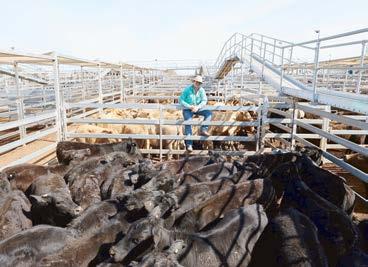
ever the average remained close to firm. Medium and heavy weight yearling steers to feed averaged 8c to 20c/kg better. Light weight yearling heifers returning to the paddock sold to fair demand for the quality penned. Yearling heifers to feed improved in price especially the heavy weight portion. Bullocks and heavy export heifers also sold to a dearer trend of 8c to 15c/kg. Cows continued to lift in price to average over 20c/kg better. Light weight Angus steers returning to the paddock made to a top of 510c with the largest numbers from 393c to 427c/kg. Yearling steers to feed for the domestic market averaged from 413c to 432c the very occasional sale to 474c/kg. Heavy weight yearling steers to feed made to 480c to average from 402c to 416c/kg. Light weight yearling heifers to restockers made to 390c to average 319c/ kg. Medium weight yearling heifers to feed made to 388c to average from 335c to 345c/kg. Heavy weight yearling heifers sold to feeder operators at an average of 384c with sales to 432c/kg. Bullocks made to 405c to average 388c and heavy grown heifers made to 392c/kg. Heavy weight PTIC cows sold to restockers at 426c/kg some returning $2,855/head. Medium weight 2 score cows to processors averaged 283c and sold 310c/ kg. Heavy weight 3 score cows averaged 323c and 855 good heavy weight cows averaged 361c made to 384c/kg. Heavy weight bulls made to 344c/kg. Cow and calves made to $3,300/unit. Market Reporter, Trevor Hess.
Report Date: 22/07/2025
Saleyard: Roma
Numbers increased once again where Roma Agents yarded 10,189 head consisting of over 5,000 steers almost 3,000 heifers and 2,000 cows. All the regular processors feedlotters and backgrounders present and active. The market was solid throughout with bullocks to 374c heavy feeders to 414c and Angus cross weaner steers to
470c/kg and cows dearer by almost 25c to 373c/ kg. Yearling steers 200 to 280kg topping 470c/ kg. Yearling steers 280 to 330kg with the majority selling from 316c to 470c/kg for the better pens. Yearling steers 330 to 400kg made to 470c to average 410c/kg. Yearling steers 400 to 480kg sold to 460c/kg to feed. Yearling steers over 480kg sold to dearer trend and made 414c/kg. Yearling heifers 200 to 280kg with the majority making to 370c to average 337c/kg to restockers. Yearling heifers 280 to 330kg topping 370c almost 8c/kg dearer. Yearling heifers 330 to 400kg sold to 382c to feed and 372c/kg to restockers. Yearling 400 to 480kg sold well to 377c/kg. Grown steers 400 to 500kg topped 340c to average 324c/kg. Grown steers 500 to 600kg made to 436c/kg to processors. Bullocks over 600kg sold stronger to 374c/kg. Grown heifers over 540kg to 356c/kg. Another sale where cow numbers exceeded 2,000 head. Cows drew competition from the normal export operators also 3 southern operators. Cows back to the paddock topped 264c/kg. The 2 score cows sold from 200c to 294c/kg. The 3 score cows topped 372c to average 343c/kg. Bulls over 600kg made to 327c/ kg. Market ReportER David Friend Report Date: 24/06/2025
Saleyard: Toowoomba
The number of cattle penned at Toowoomba remained relatively close to the previous weeks level at 103 head. Overall quality was mixed with young cattle in the largest numbers along with a handful of cows and a few bullocks. The regular panel of buyers was present and operating across all classes. The better end of the medium weight yearling steers to feed experienced very little change in price. Yearling heifers and cows sold to a market in line with other selling centres.
Light weight yearling steers returning to the paddock made to 274c to average 272c/kg. Medium weight yearling steers to feed for the do-
mestic market made to 336c and averaged 321c with poor quality lines at 172c/kg. Light weight yearling heifers to restockers averaged 222c and made to 228c/kg. Yearling heifers to feed made to 256c and averaged 240c/kg. A couple of full mouth bullocks made to 203c/kg and returned $1,564/head. Medium weight 2 score cows averaged 178c and heavy weight 3 scores made to 183c/kg and returned $1,146/head. Light weight bulls to restockers made to 270c/kg. Market Reporter, Trevor Hess.
Report Date: 22/07/2025
Saleyard: Warwick
The supply of stock at Warwick remained unchanged with 1,022 head penned. All the regular buyers attended and operated on a market very similar to last week and any price variations in the yearling cattle was quality related. The cows penned were not up to last weeks standard and eased from 5c to 8c/kg. Yearling steers in the 200280kg range to restockers made 458c to average 420c/kg. Yearling steers over 280kg to background made 443c to average 394c/kg. Yearling steers to feed for the domestic market sold to 420c and averaged 391c/kg. Heavy Limousine yearling steers to the wholesale meat trade made 436c to average 412c/kg. Yearling heifers in the 200-280kg range to restockers made 352c to average 321c/ kg. Yearling heifers over 280kg to the local meat trade made 406c to average 392c/kg. Medium and heavy weight yearling heifers to feed made 350c to average from 330c to 333c/kg. Young bullocks to processors sold to 409c and averaged 375c/kg. Heavy grown heifers to processors made 379c to average 348c/kg. Light weight cows to processors made260ctoaverage236c/kg.Heavyscore3cows to processors made 285c to average 279c with the best heavy cows topping at 320c/kg. Light weight bulls to restockers made 338c to average 321c/kg. Heavy bulls to processors made 333c to average 297c/kg. Market Reporter Errol Luck. SHEEP Report Date: 23/07/2025
Saleyard: Warwick
The supply of stock at Warwick remained stable with 1,359 lambs and 308 grown sheep penned. All the regular wholesalers and butchers attended however not all processors were present. Young restockers lambs in smaller numbers sold to dearer trends as did those to the butcher trade. Older lambs to the local wholesale meat trade sold to very strong competition with the mutton selling to prices close to last week. Light weight young lambs to restockers sold from $92 to $121 with those over 16kg at $119 to $145/head. Young lambs over 18kg to the butcher trade sold from $114 to $165/ head. Older lambs in the 18-20kg range to feed sold to $163 with those to the butcher trade at $180 to $188/head. Lambs in the 20-24kg range to the wholesale meat trade sold from $177 to $246/head. Lambs to processors sold from $230 to $320/head. Hoggets to processors sold from $140 to $205/ head. Light weight dorper ewes to restockers sold from $132 to $172/head. Heavy ewes to processors sold from $136 to $195/head. Wethers to processors sold from $158 to $180/head. Ram lambs to the wholesale meat trade sold from $130 to $184/ head. Rams to processors sold from $92 to $160/ head. Ewes and lambs sold to $235/unit. Market Reporter Errol Luck.
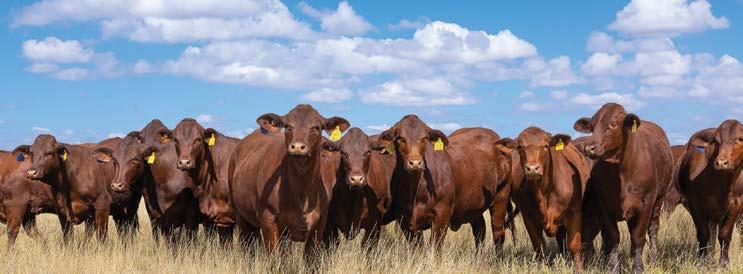
By Breanna Lloyd
Central Queensland rural family and long-time racing identities, the Actons, have been honoured with a public grandstand recognising their enormous contributions to the racing community at the Rockhampton Jockey Club.
The naming of the Acton Stand took place at Callaghan Park on Friday, 20 June, following race four, with members of the Acton family and their friends in attendance.
RJC chairman Rob Carr said the family had made a lasting impact on racing in the region.
“The Actons have been part of this club long before my time and they’ve never left,” he said.
“This was only fitting. They’ve done so much for racing in Central Queensland.”
The family’s involvement dates back to 1917 when Robert Acton drew the 12,000-acre Wilpeena property, 150km west of Rockhampton.
In 1926, he helped establish the Mackenzie River Amateur Picnic Races, which were later held at Wilpeena from 1964 until 2008. The picnic races were hosted by Tom and Val Acton from 1964, and in 1985, Alan and Jennifer Acton played host to the race day.
The late Alan Acton, a life member of the RJC, was one of the region’s most well-known racing figures.
His wife, Jennifer Acton, still carries her late husband’s legacy and has continued breeding and racing thoroughbreds to this day.
“Alan would be so humbled and honoured,” she said.
“He had a great love affair with racing. It’s been part of our family for generations.
“I’ve heard stories where if there was a wedding on the same day as one of granddad’s horses was racing, he’d go to the races and just make the reception afterwards.”
Jennifer also shared memories from her early racing days, having married into a family deeply tied to the sport.
“It is, like Larry said, a great honour to stand here to think of what our forefathers have done in supporting racing all over Queensland,” she said.
“I remember growing up at Middlemount when Dad and a few others helped start the Middlemount Race Club. Back in 1987, I was with Dad pulling timber to get it going and they’re still racing there today.”
Tom Acton explained how his connection with racing started from an early age.
“When I was at boarding school, I used to get a taxi in the mornings just to come and watch the horses do trackwork here,” he said.
“Clem Jackson was training them and Wally Welburn was riding them and he’s still riding trackwork today.
“They were some great times and we’re just happy to still be involved.”
Larry Acton said the family’s passion for rural racing goes back generations.
“Our grandfather Robert and his sons, including my dad Tris, were passionate about rural racing,” he said.
“We’re proud to carry that on. Some of us are still trying to win a race here and we’ll keep trying.” He also acknowledged his sister, Sandra



